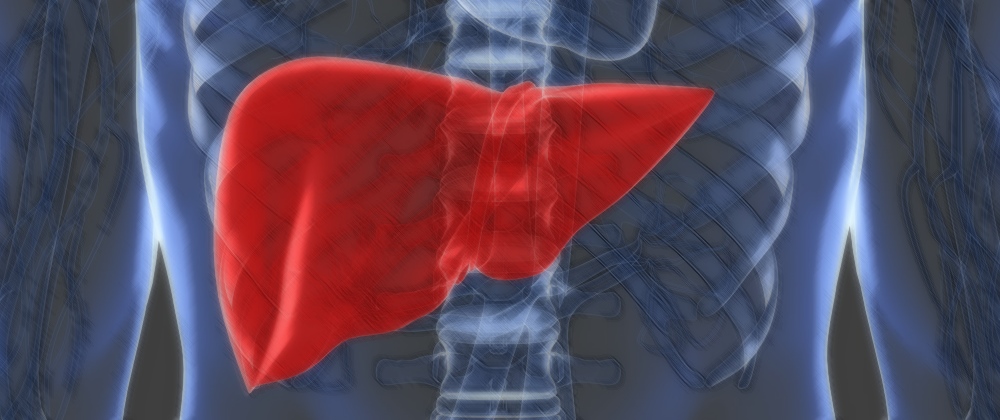

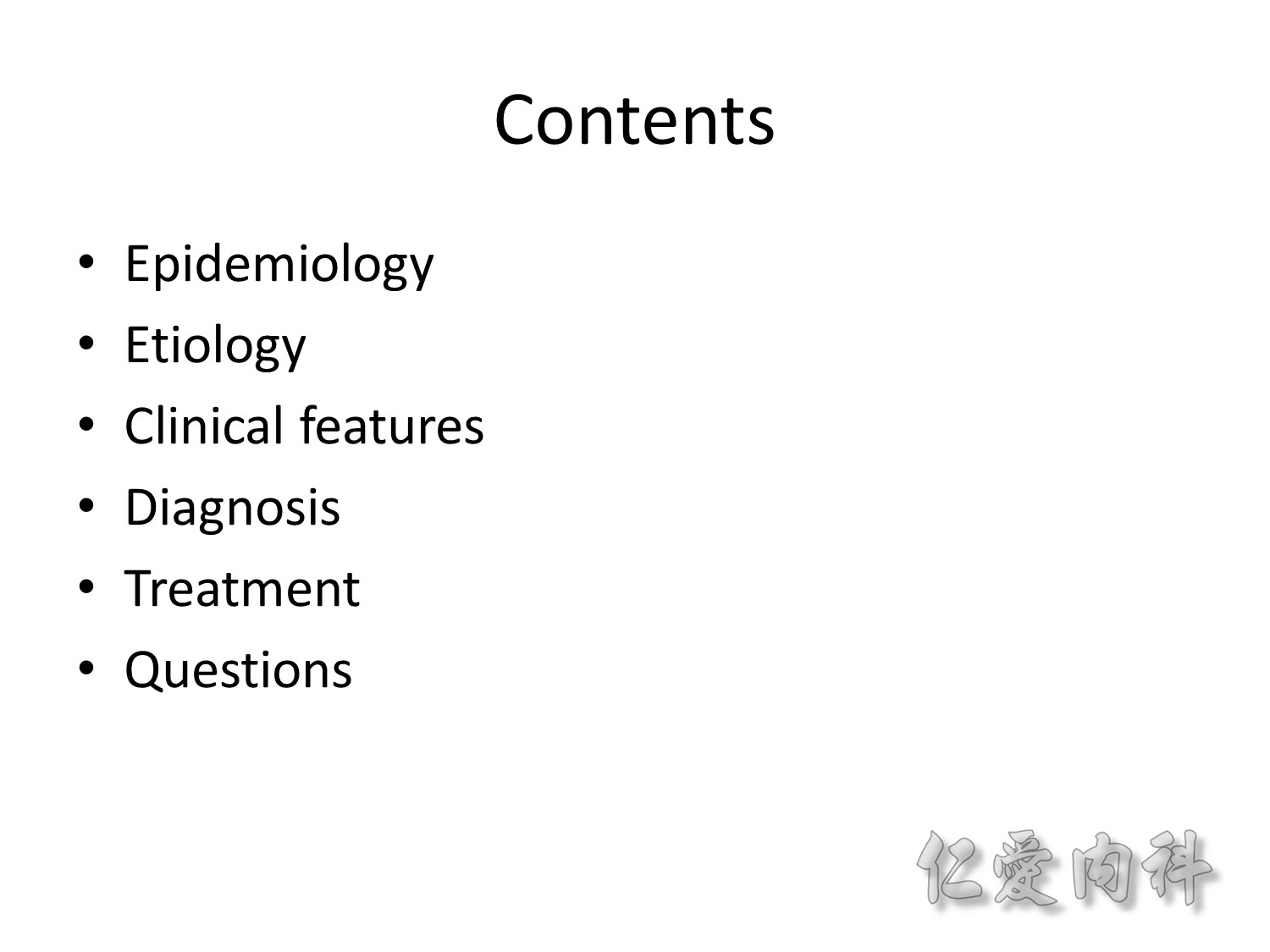
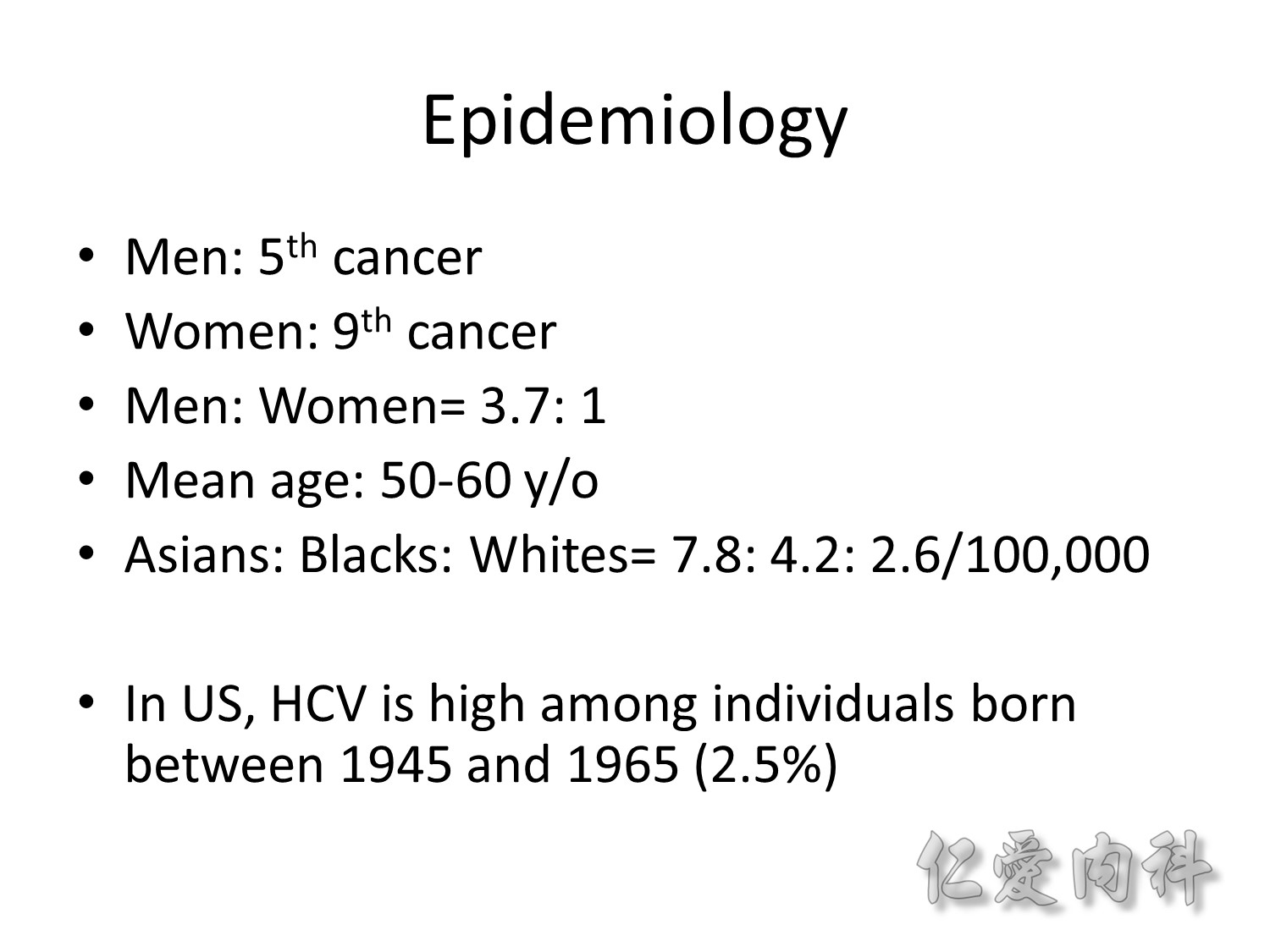
- The most common primary malignant tumor of the liver
- The fifth most common cancer in men
- The eighth most common in women
- Ranks fourth in annual cancer mortality rates
(From Sleisenger’s GI and Liver disease, 10th ed.)
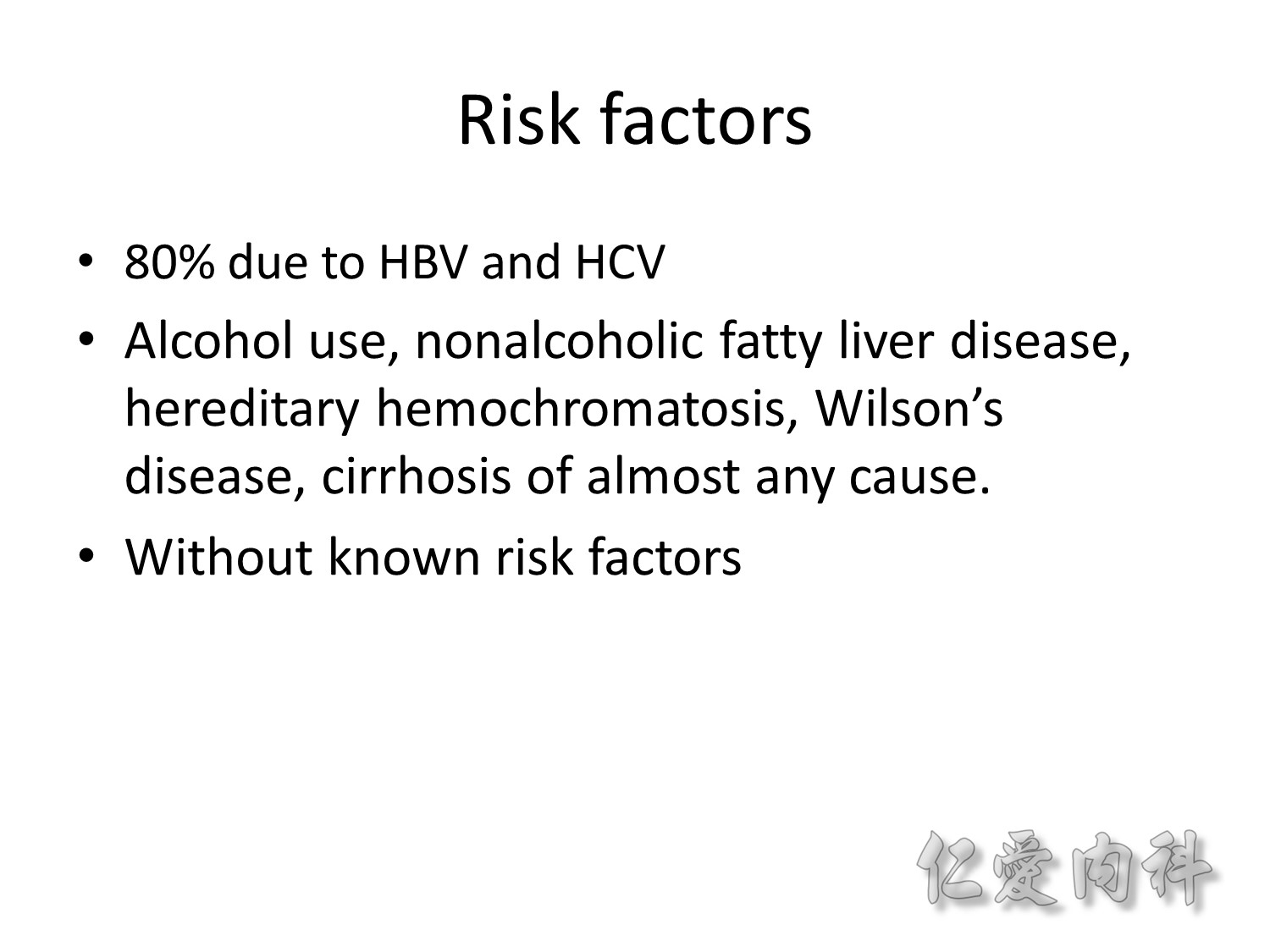
- The incidence of HCC increases progressively with advancing age in all populations
- Male predominance
- Populations at high risk for the tumor (mean male-to-female ratio, 3.7 : 1.0)
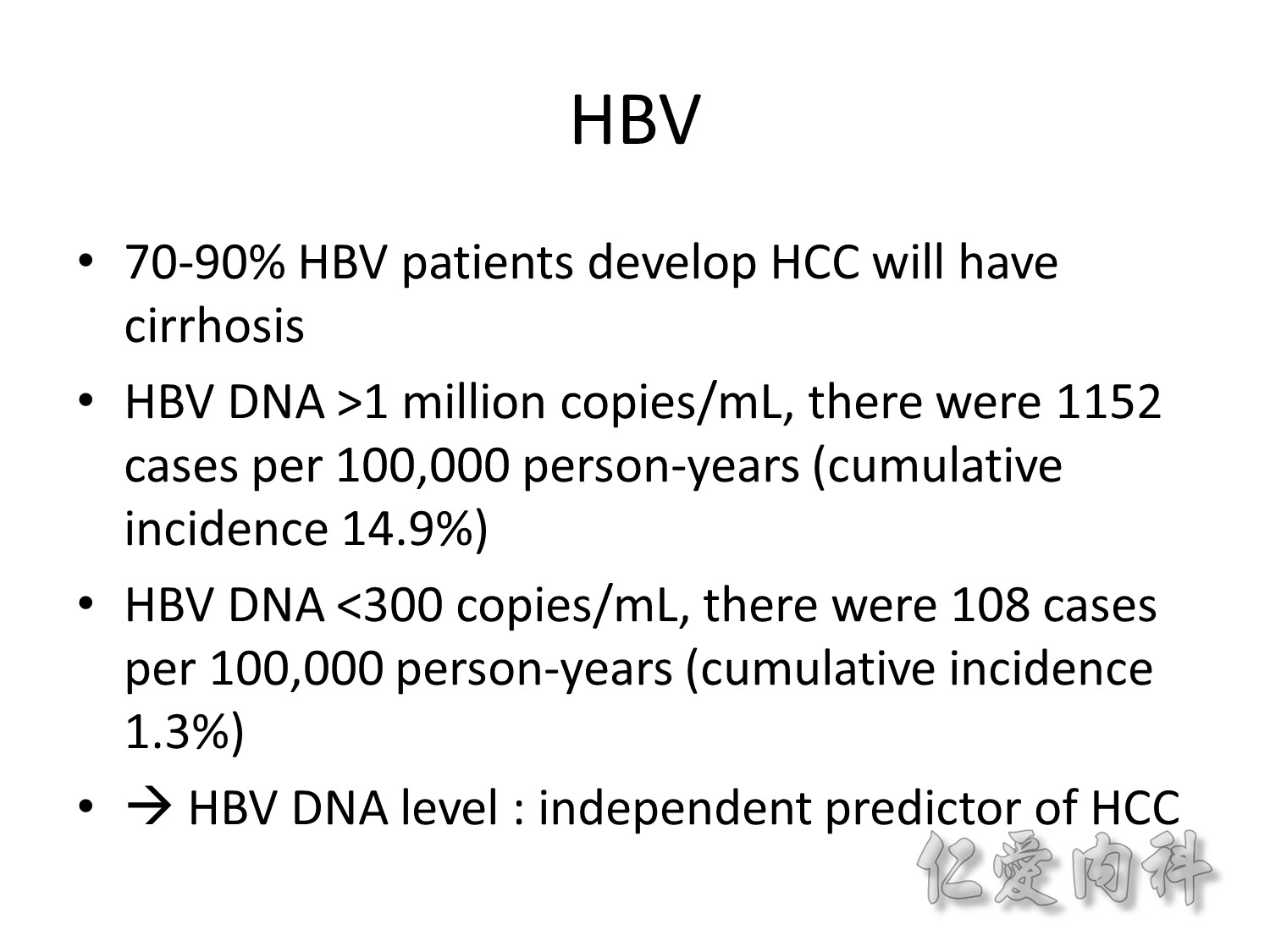
- Incubation period:60-90 days
- Clinical illness (jaundice):<5 yrs, <10%; >5 yrs, 30%-50%
- Acute case-fatality rate: 0.5%-1%
- Chronic infection: <5 yrs, 30%-90%; >5 yrs, 2%-10%
- Premature mortality from chronic liver disease: 15%-25%
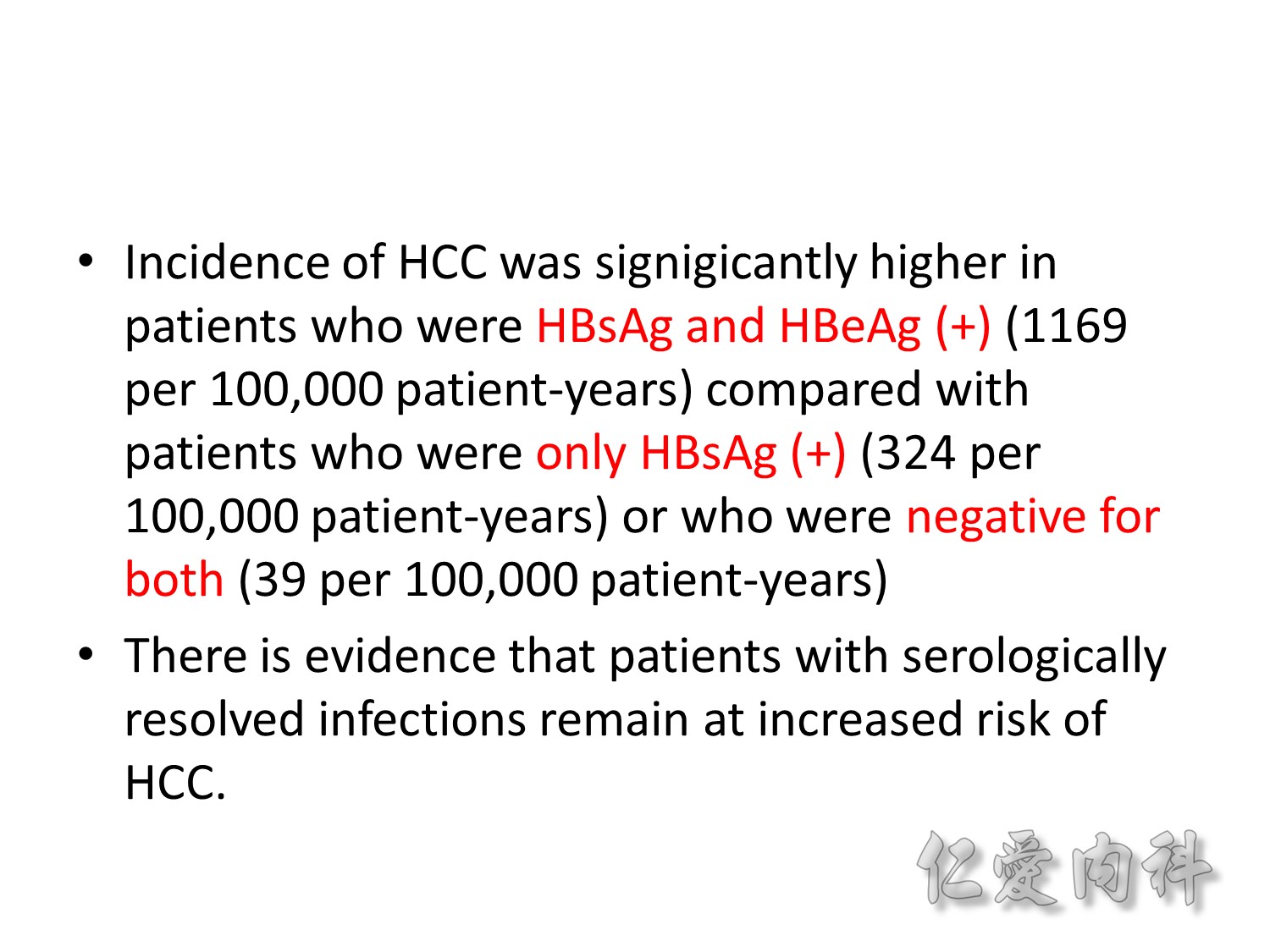
- HBsAg – used as a general marker of infection
- HBsAb – used to document recovery and/or immunity to HBV infection
- anti-HBc IgM – marker of acute infection
- anti-HBc IgG – past or chronic infection
- HBeAg – indicates active replication of virus and therefore infectiveness
- Anti-HBe – virus no longer replicating. However, the patient can still be positive for HBsAg which is made by integrated HBV
- HBV-DNA – indicates active replication of virus, more accurate than HBeAg especially in cases of escape mutants. Used mainly for monitoring response to therapy
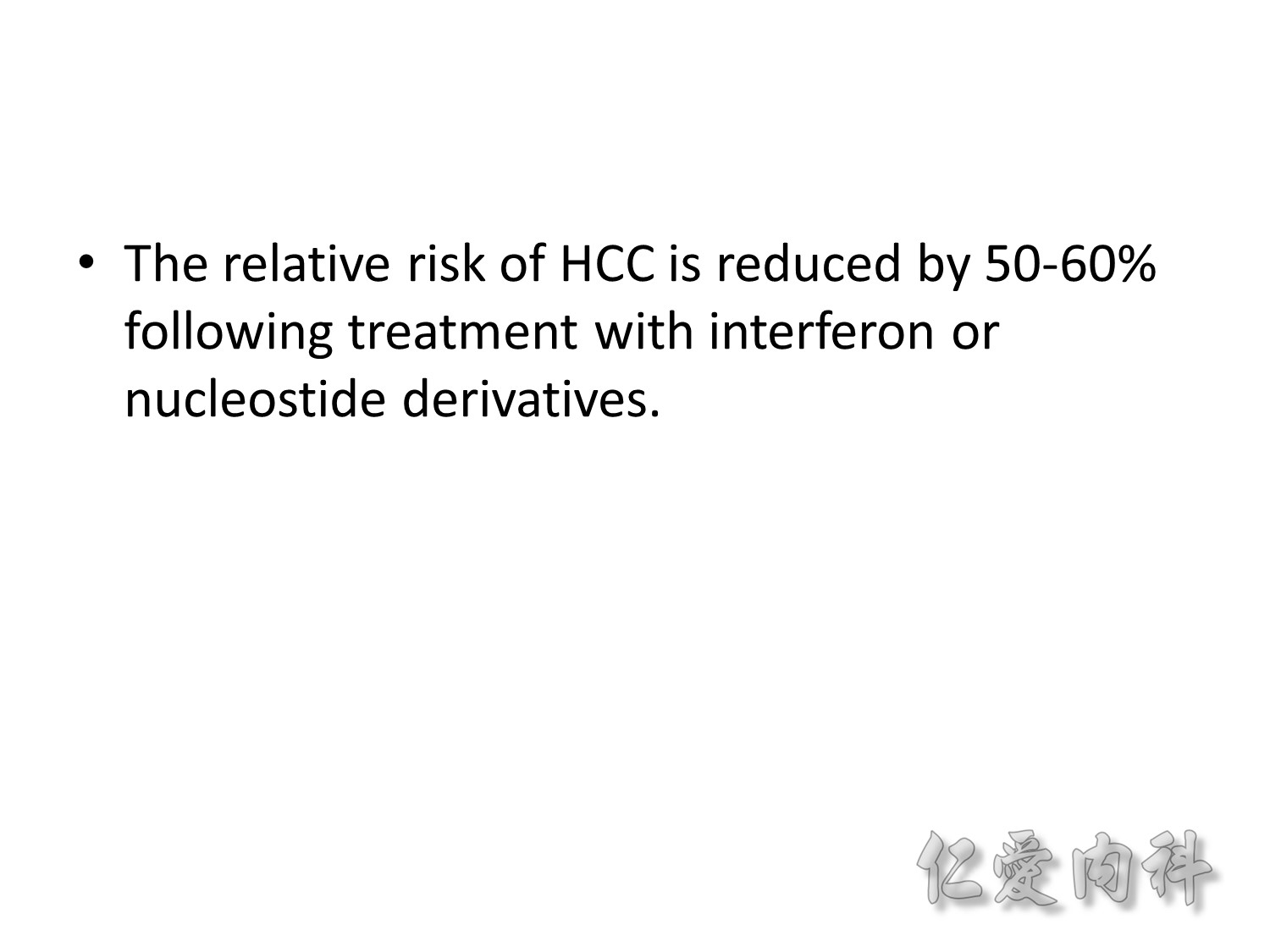
- HBV為目前已知最小的DNA病毒,只有3200個鹼基
- 4個互相重疊的開放編閱架構,分別是S基因、C基因、X基因和P基因
- 基因體轉錄之後形成4個mRNA轉錄子, 一是做為基因複製的模板, 另一功能是轉譯(translation)形成蛋白質產物

- B型肝炎病毒複製的過程中,需要以RNA為中間體,由P基因產生的DNA聚合酶具有反轉錄酶的功能,能將pregenomic RNA逆向轉錄成負鏈DNA(negative strand DNA)。 由於反轉錄作用產生的錯誤,導致B型肝炎病毒於演化過程出現核酸置換的機率約為一般DNA病毒的10倍。經過長時間的演化,病毒基因體出現異質性(heterogeneity) 。基因型 (Genotype): A-H (台灣: B, C) 變異株 (Variant/Mutant): precore/core promoter/pre-S mutant
- 類種性 (Quasi-species) : 優勢株為主的相關突變株病毒群
- At least 10 HBV genotypes (A to J) and several subtypes have been defined,
- Divergence in the entire HBV genomic sequences > 8% for genotypes , 4-8% for subtypes
- Except for the newly identified genotypes I and J, the geographic and ethnic distributions of HBV genotypes and subtypes are well characterized
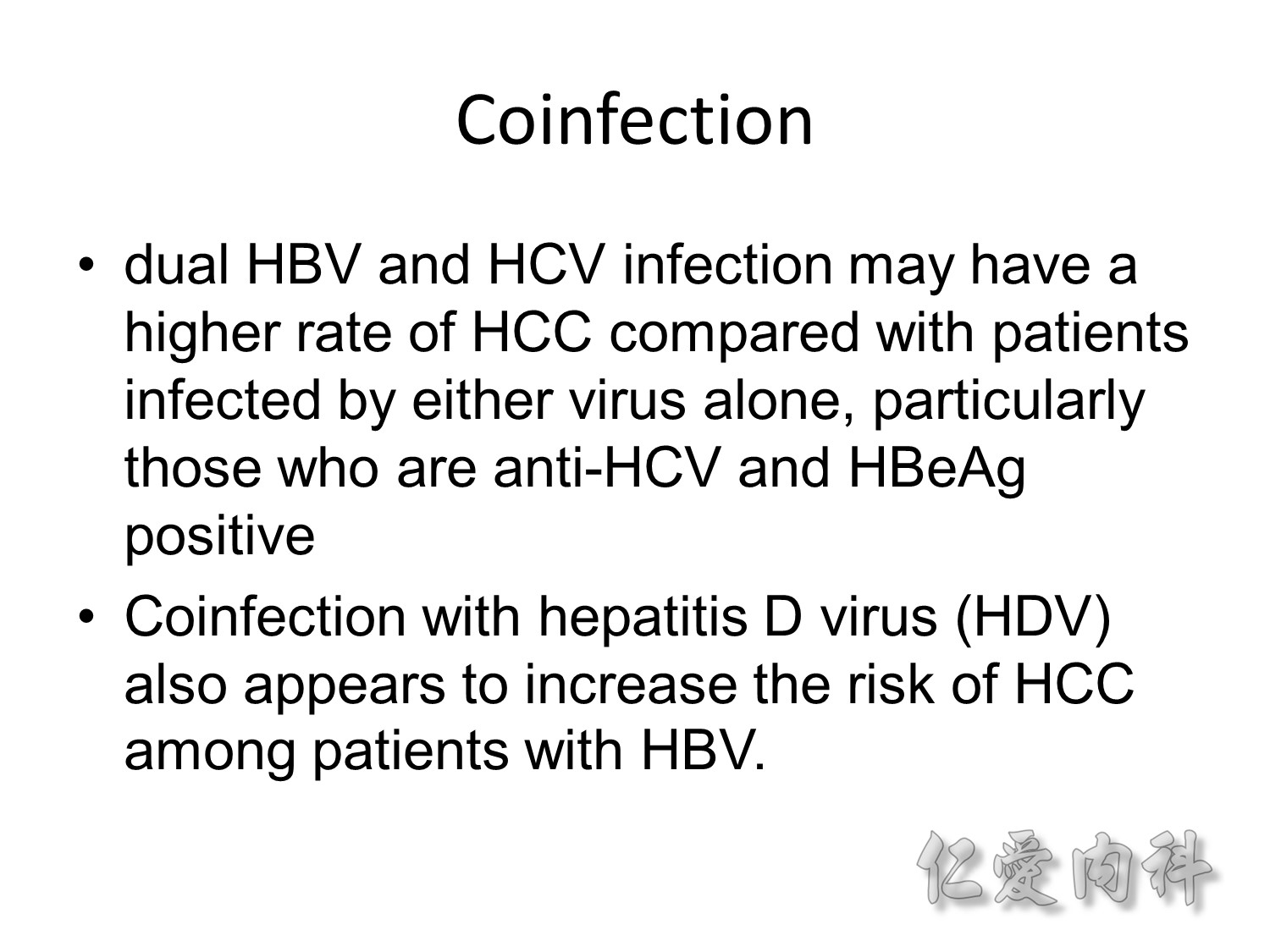
- A class of primary liver cancer appears to have its origins in progenitor cells, the stem cells of the liver, located in association with the canals of Hering
- Progenitor cell activation: chronic viral hepatitis and cirrhosis
- Morphologically like typical HCC or mixed cholangiohepatocellular carcinoma
- Cytokeratin 19 (+): Aggressive course
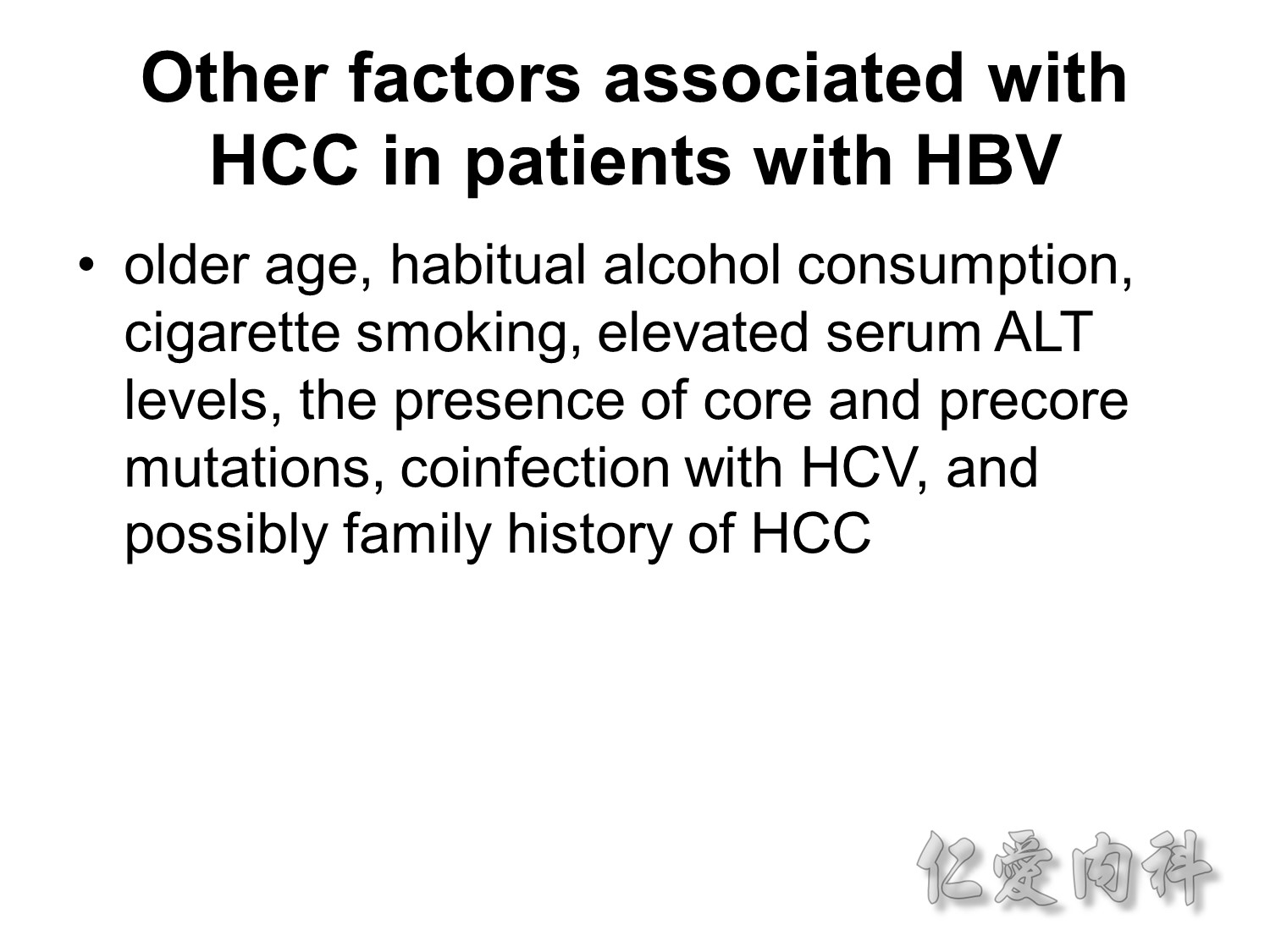
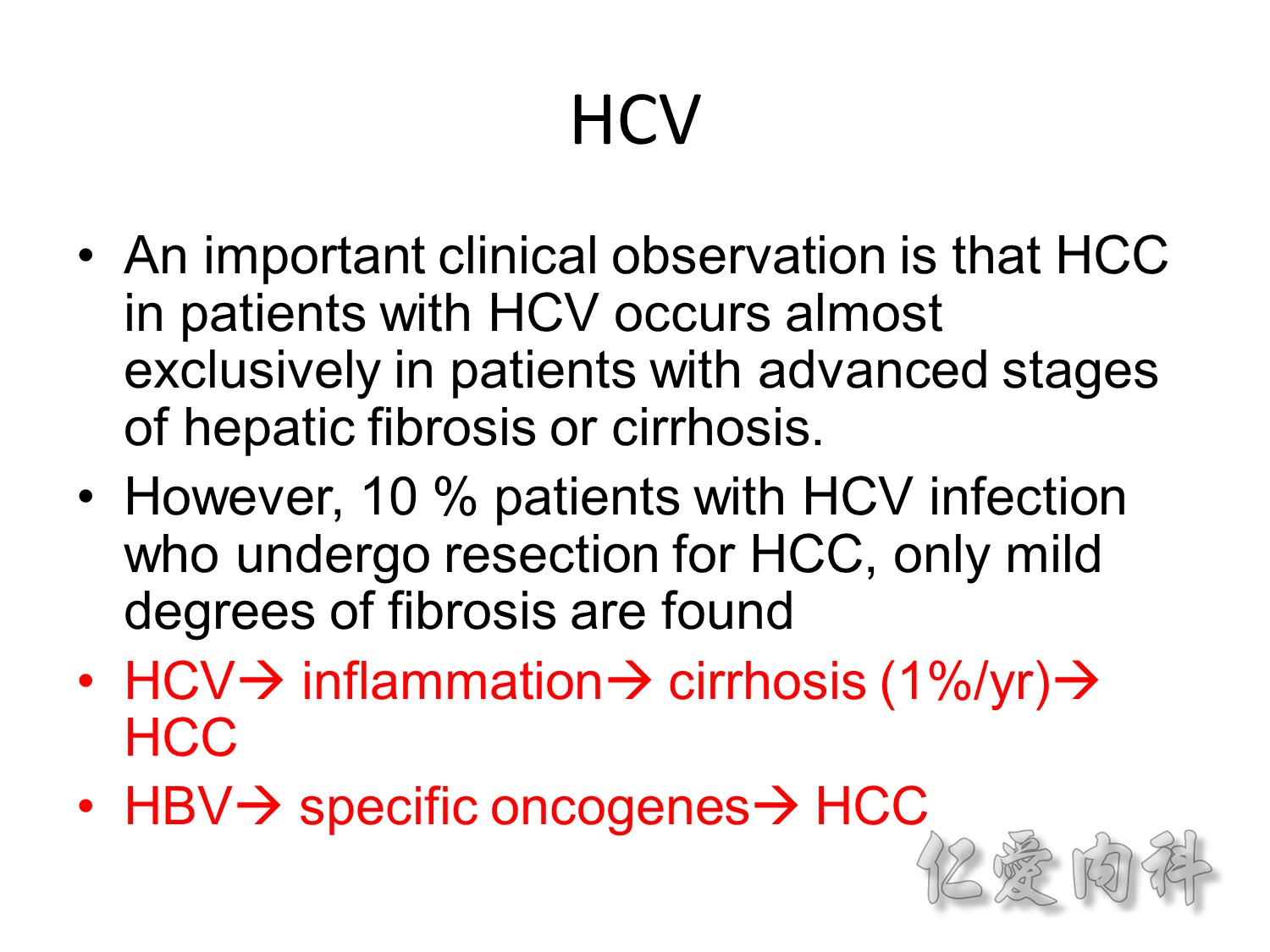
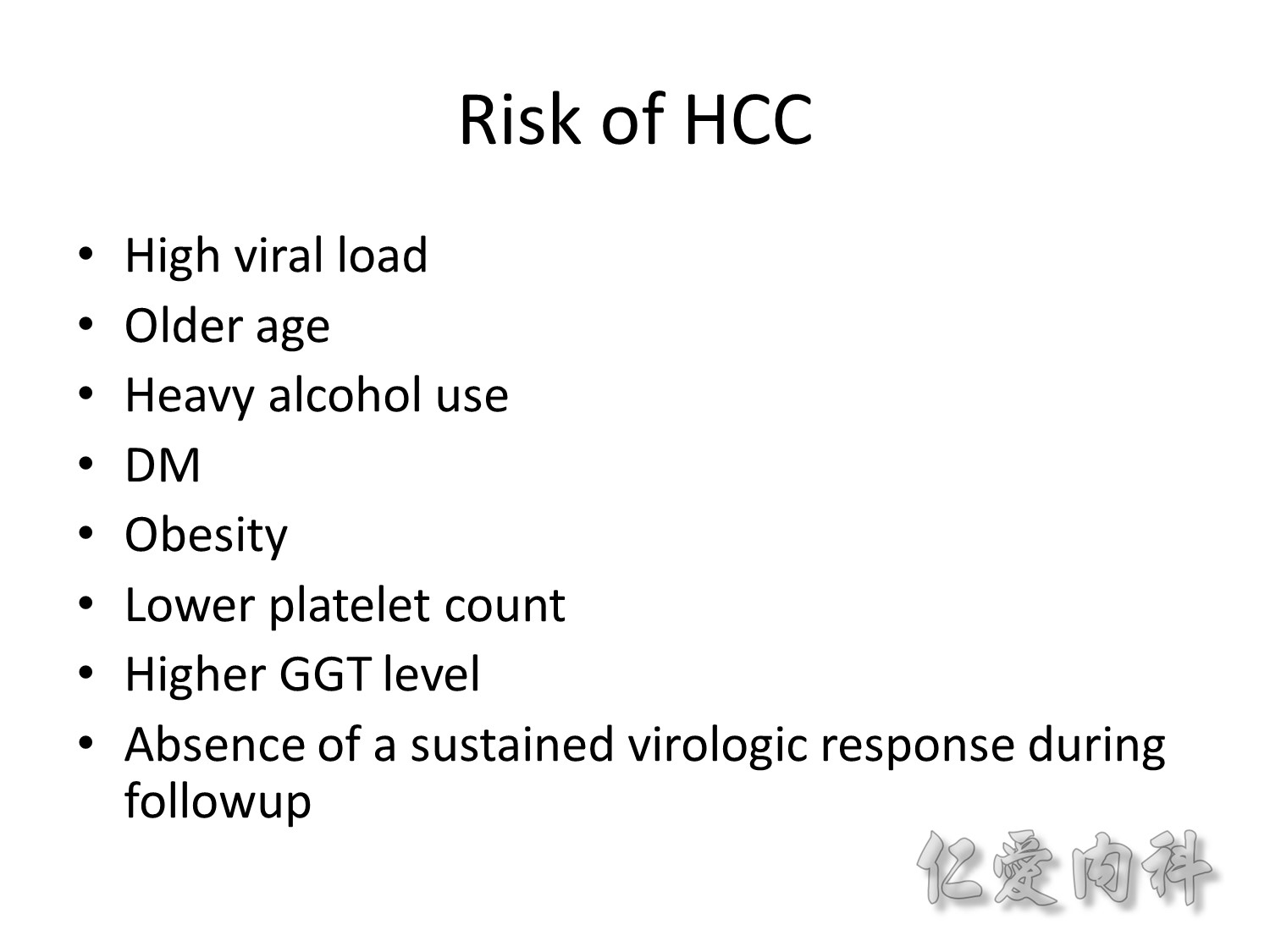
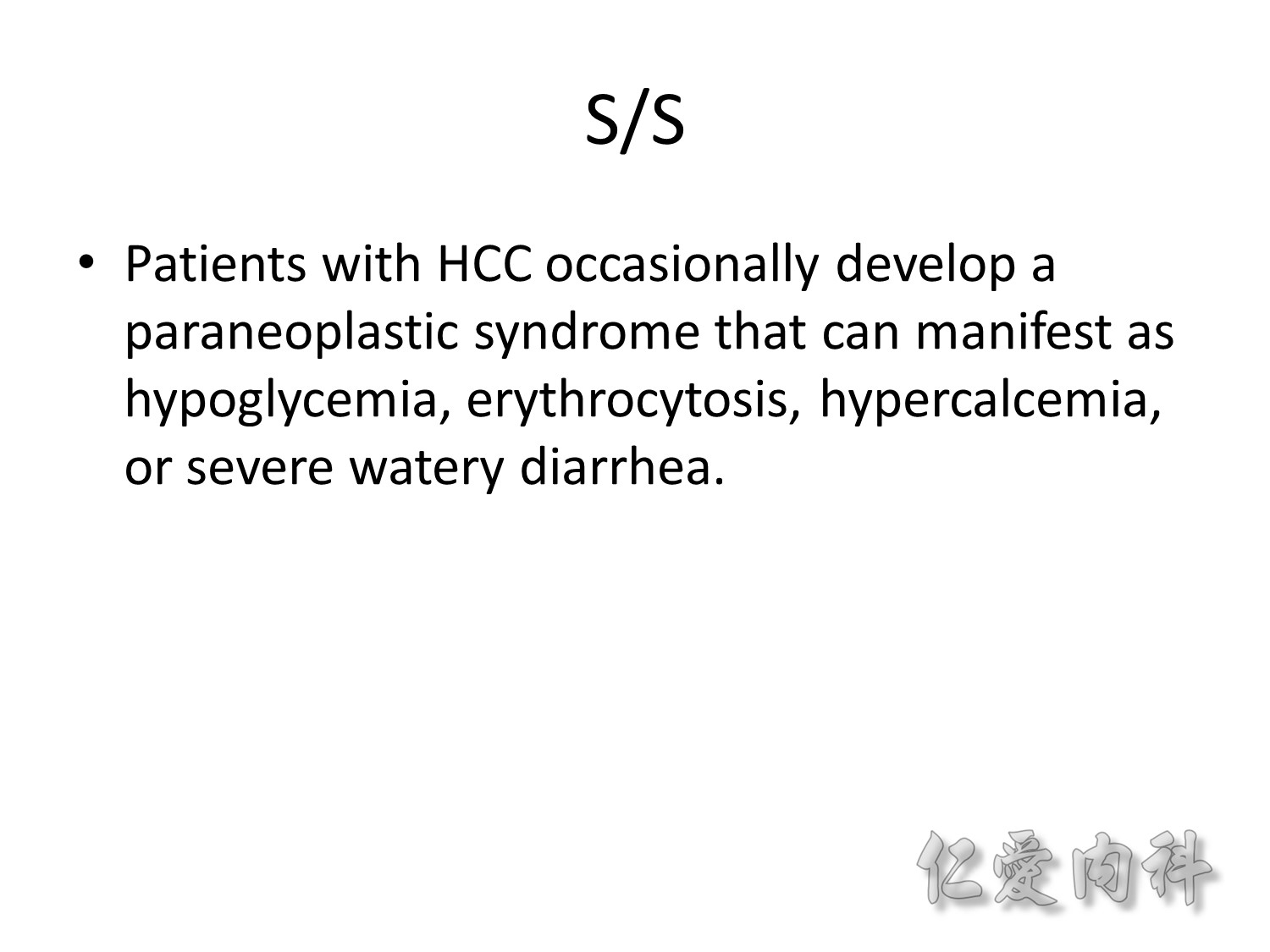
Frequency (%)
Abdominal pain 59-95
Hepatomegaly 5 4-98
Weight loss 34-71
Ascites 35-61
Weakness 22-53
Fever 11-54
Abdominal swelling 28-43
Splenomegaly 27-42
Nonspecific GI symptoms 25-28
Wasting 25-41
Jaundice 5-26
Jaundice 4-35
Hepatic bruit 6-25
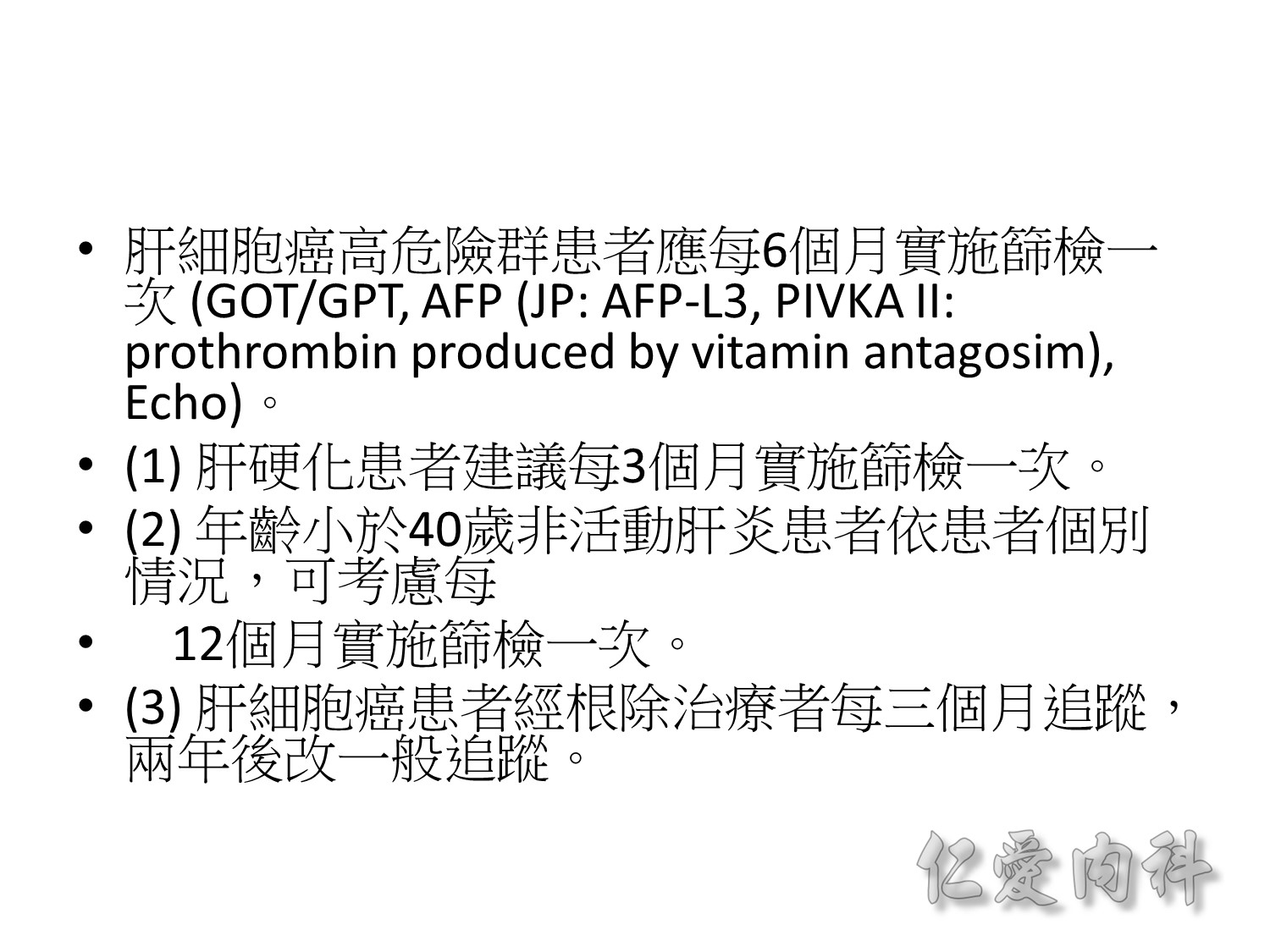
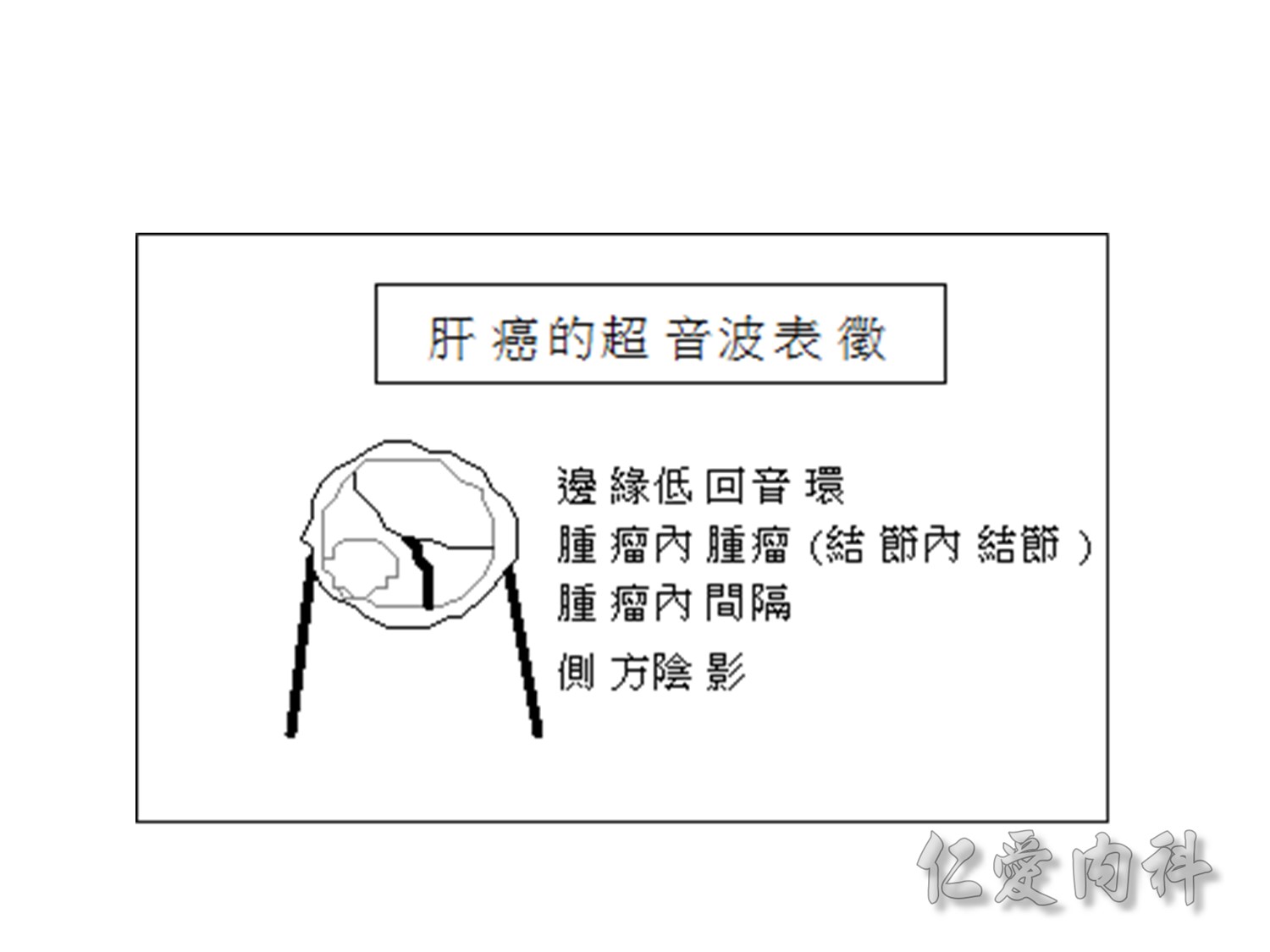
- Sensitivity: 48%
- Increases with increasing size of the lesion
- Specificity: 97%
- The US appearance of HCC is variable
- Smaller tumors (<5 cm): hypoechoic + a thin peripheral fibrous capsule
- Larger tumors: Increased complexity of the nodule
- Dynamic contrast-enhanced Doppler US
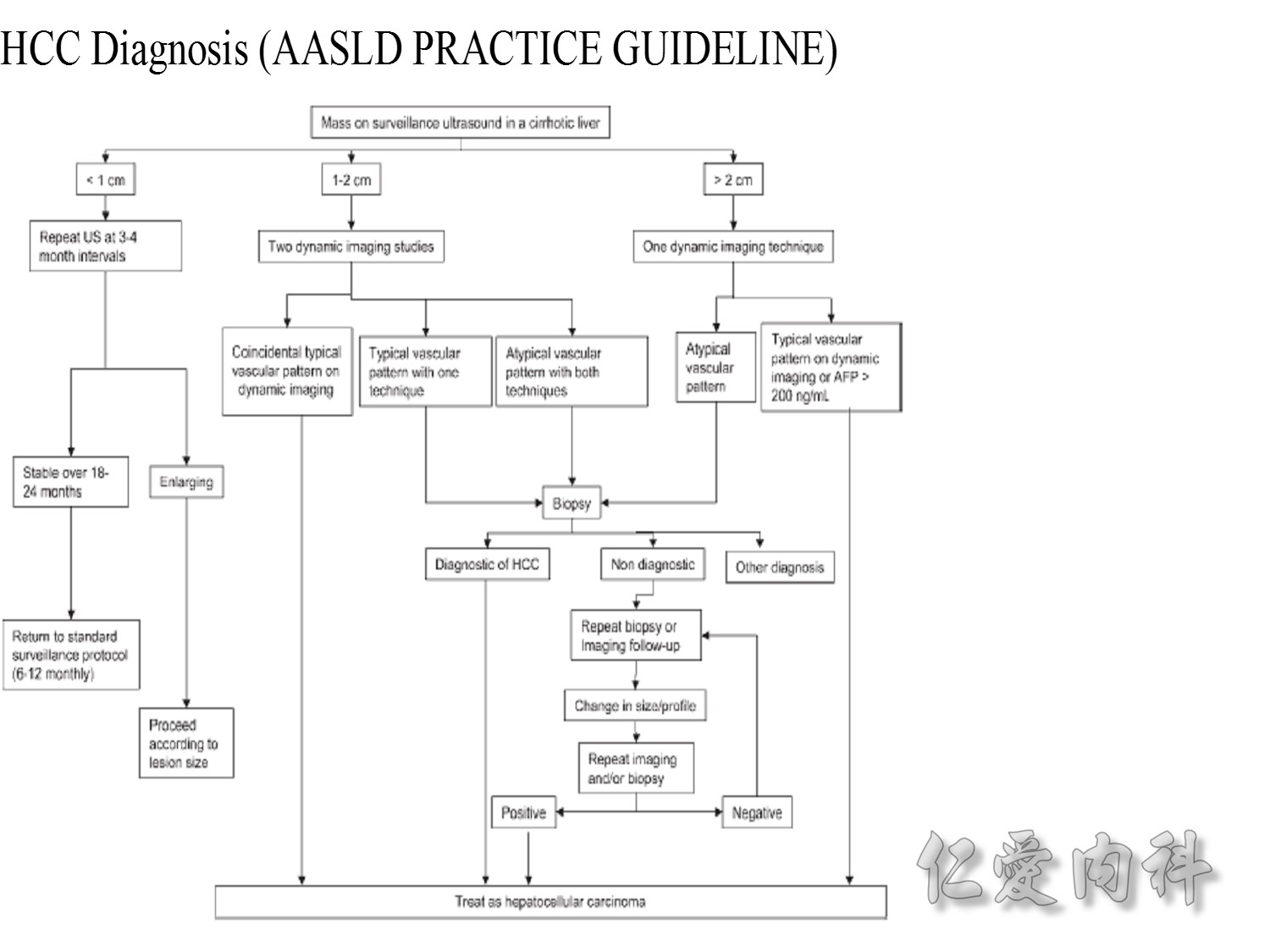
- PET <1 cm 效果不錯
- RFA 效果比PEI 好
- Other ablation- Percutaneous irreversible electroporation (IRE)
- Percutaneous ablation and transarterial chemo- or radioembolization are commonly used in the treatment of HCC and mCRC to the liver.
- IRE using the Nanoknif is more versatile than other ablative modalities (such as RFA) in that tumors abutting vascular structures can be treated with IRE without compromise of the vessels or concern for the heat sink effect of nearby blood flow. IRE of liver tumors is safe.
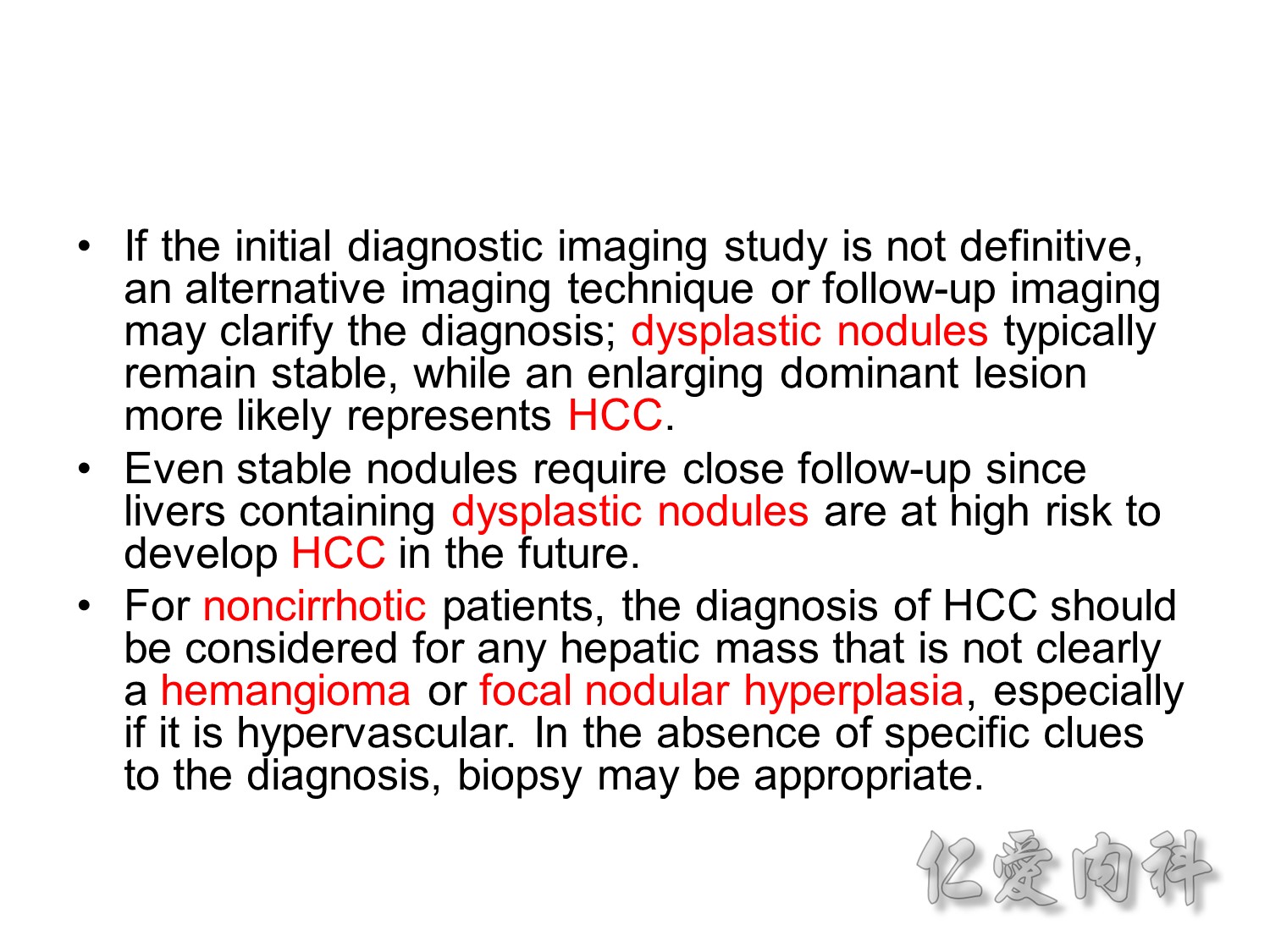
- dysplastic nodules 需每三個F/U 一次
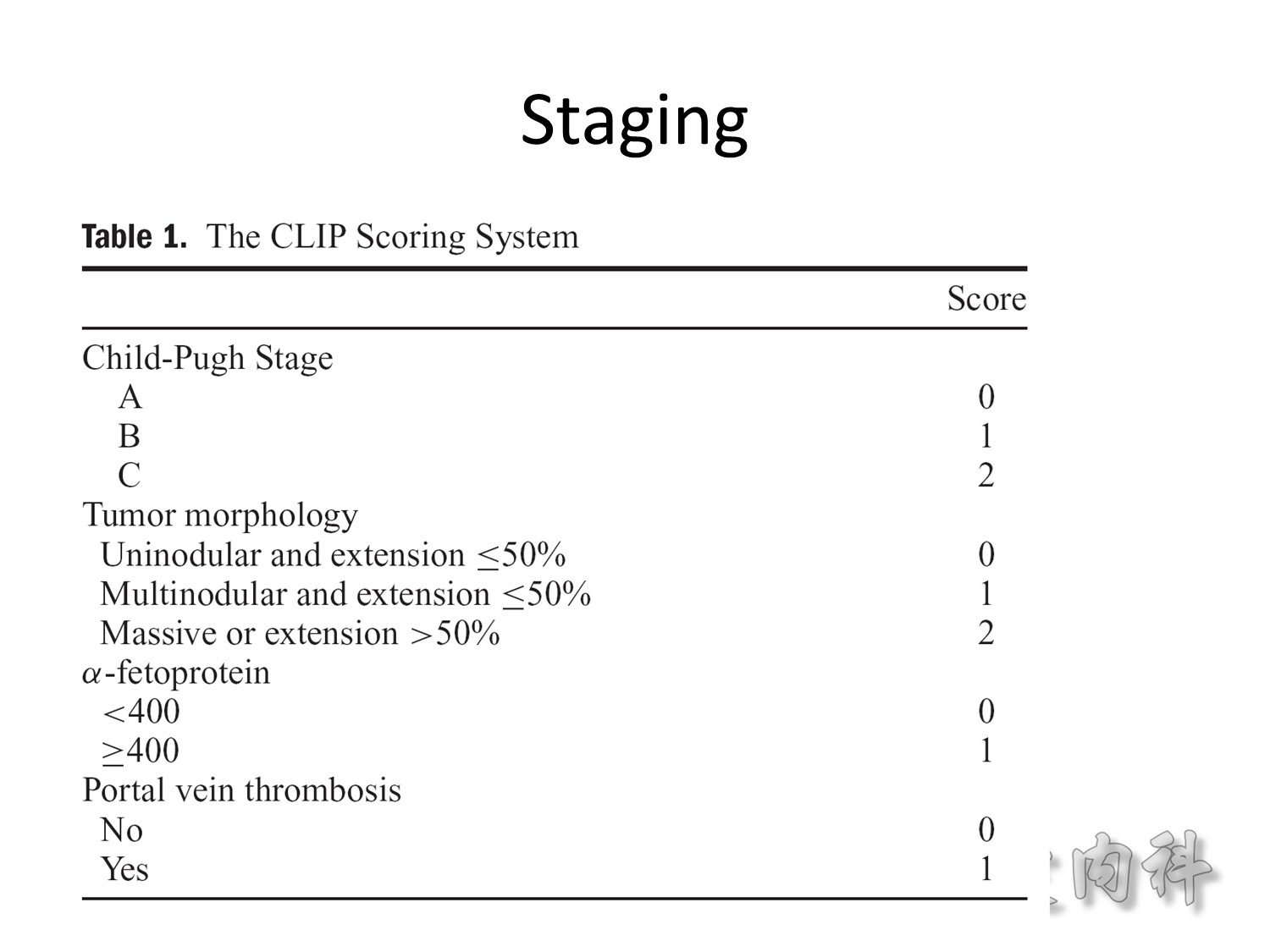
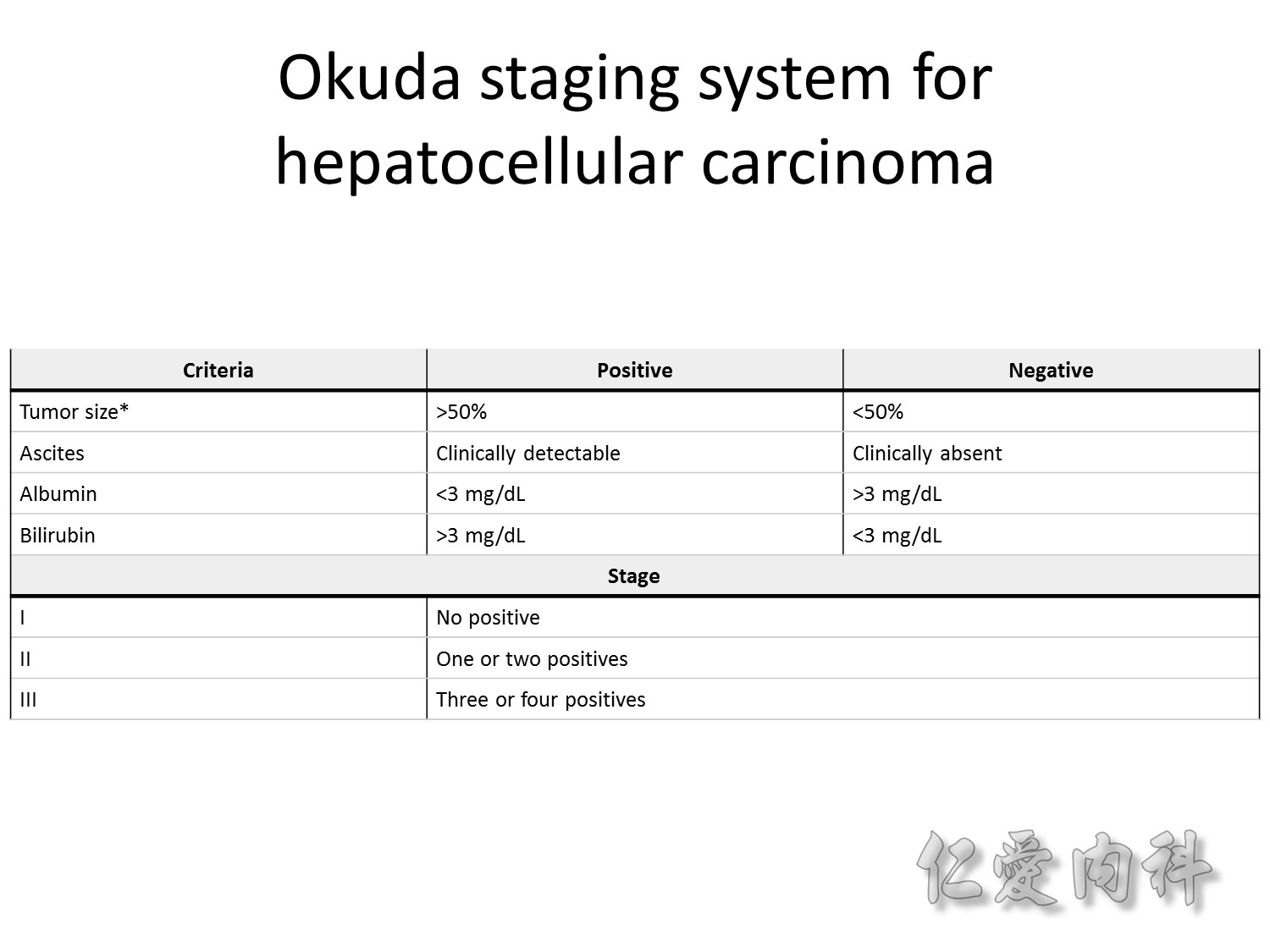
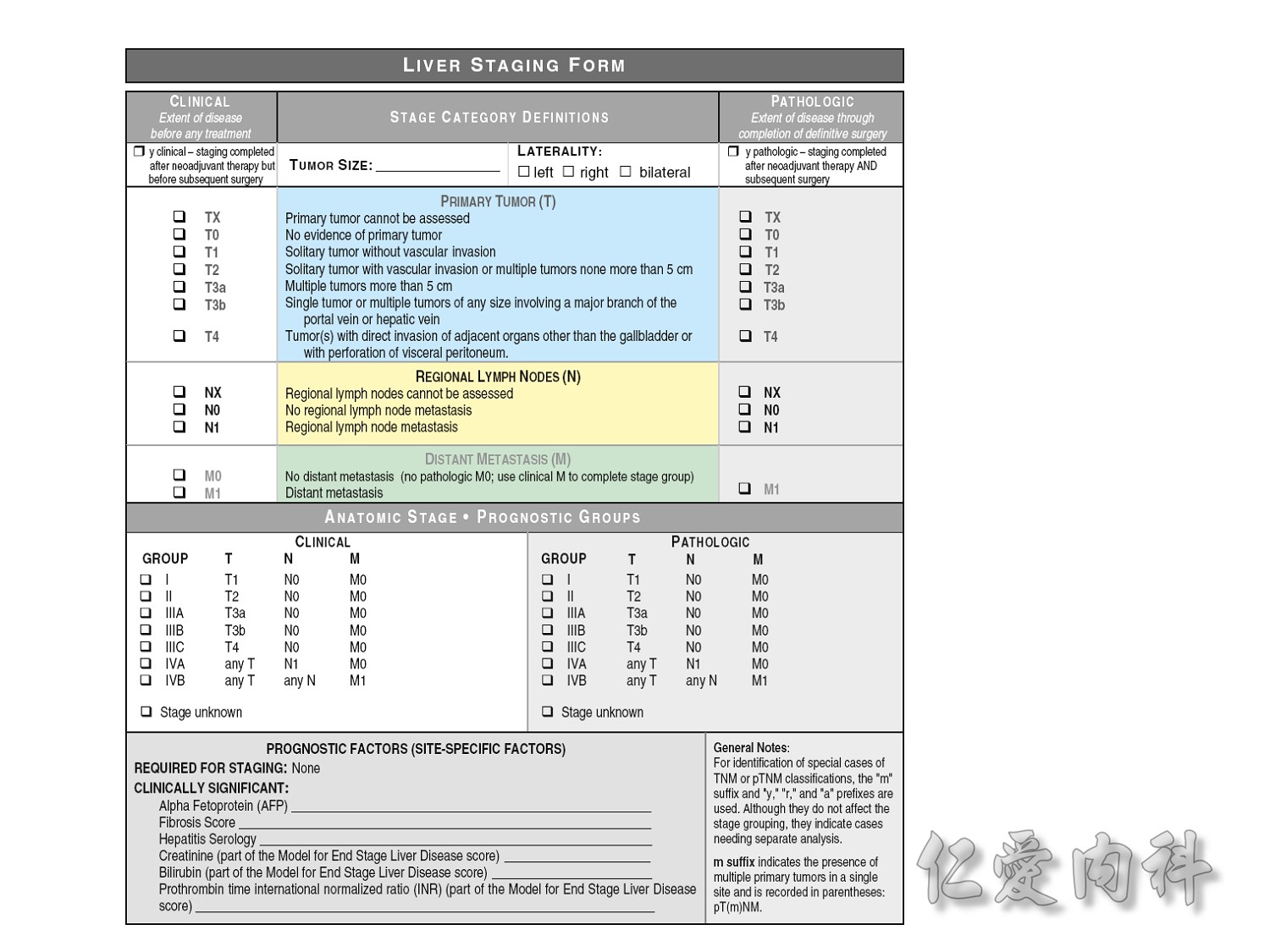
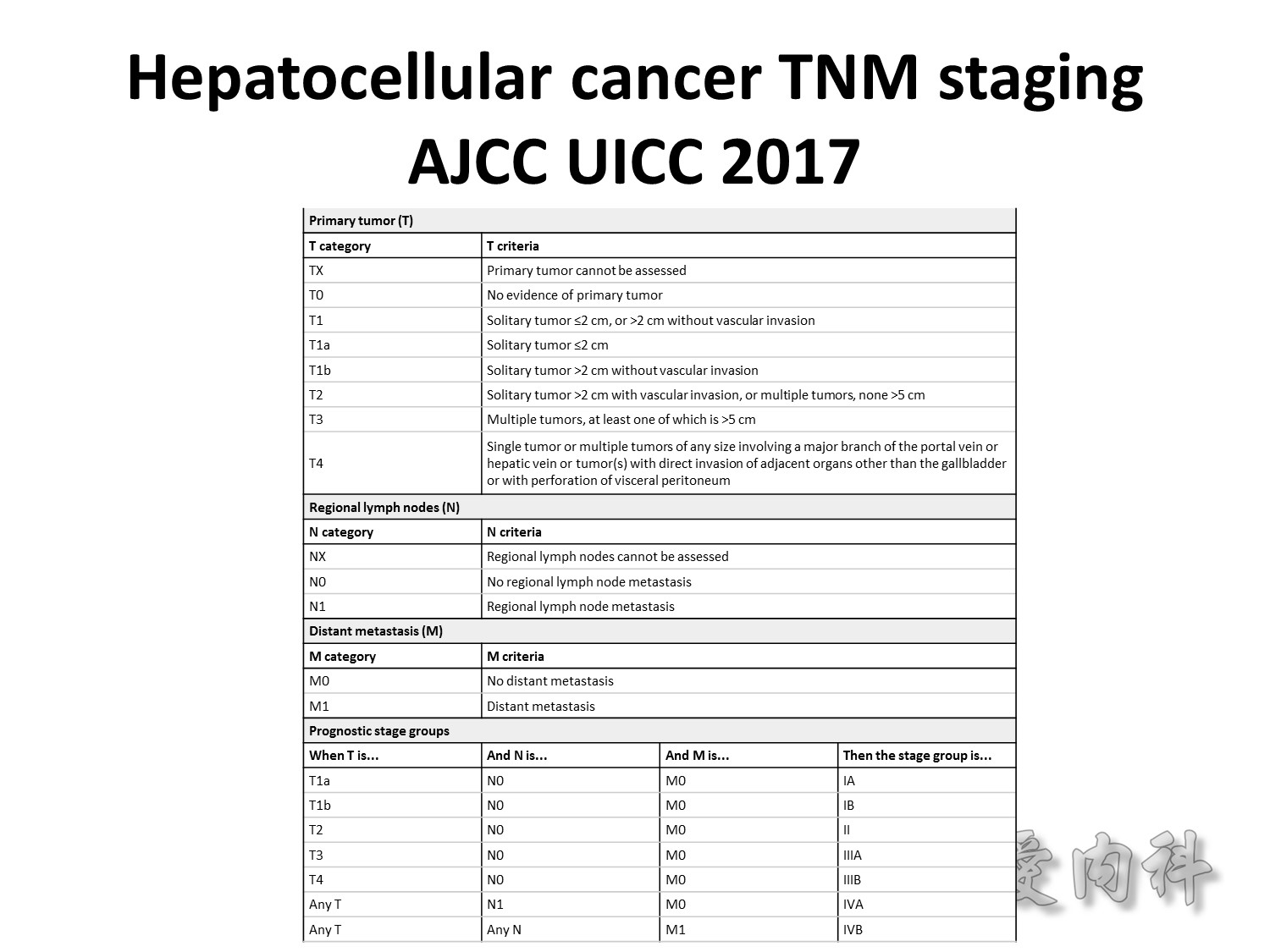
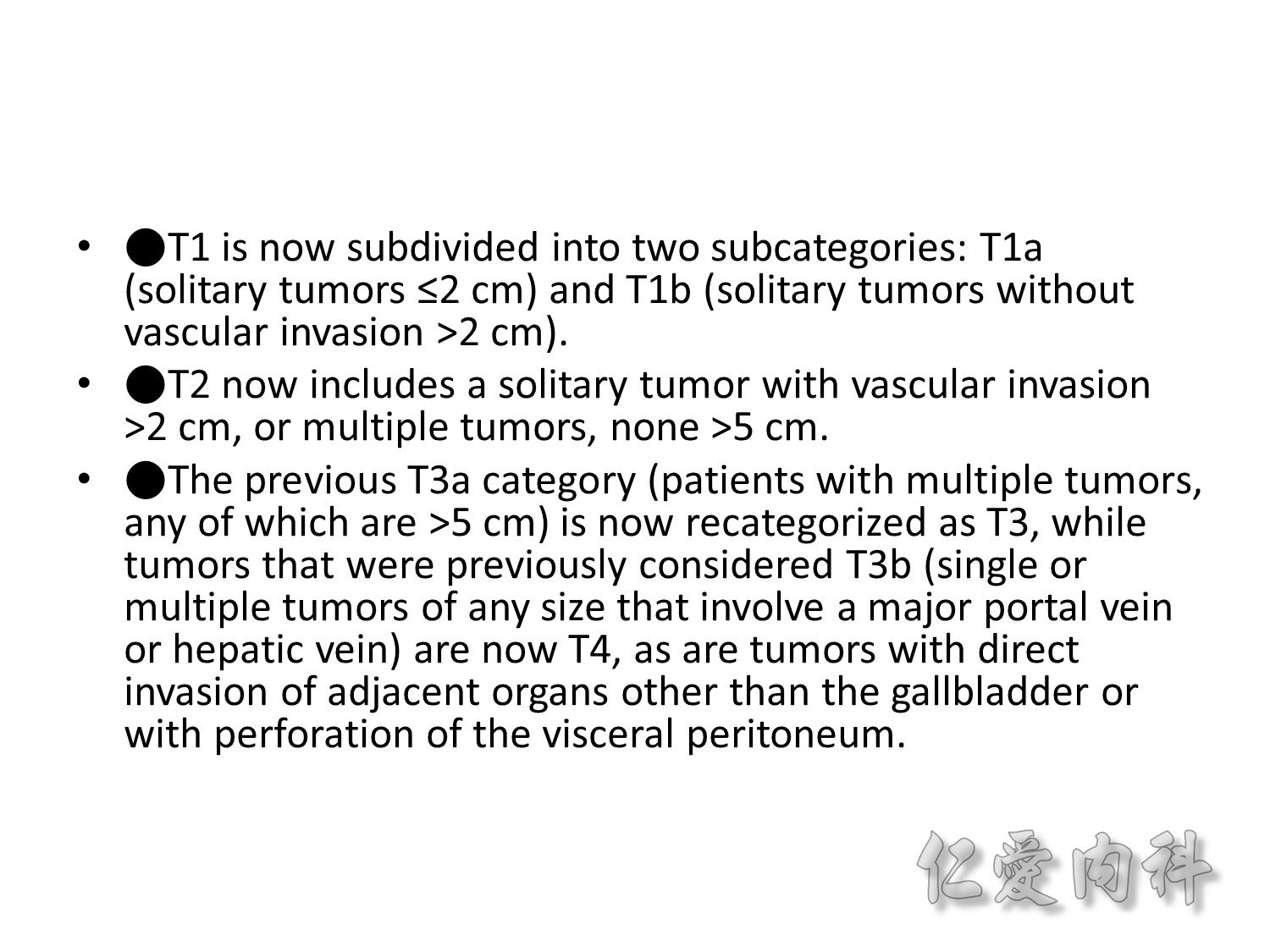

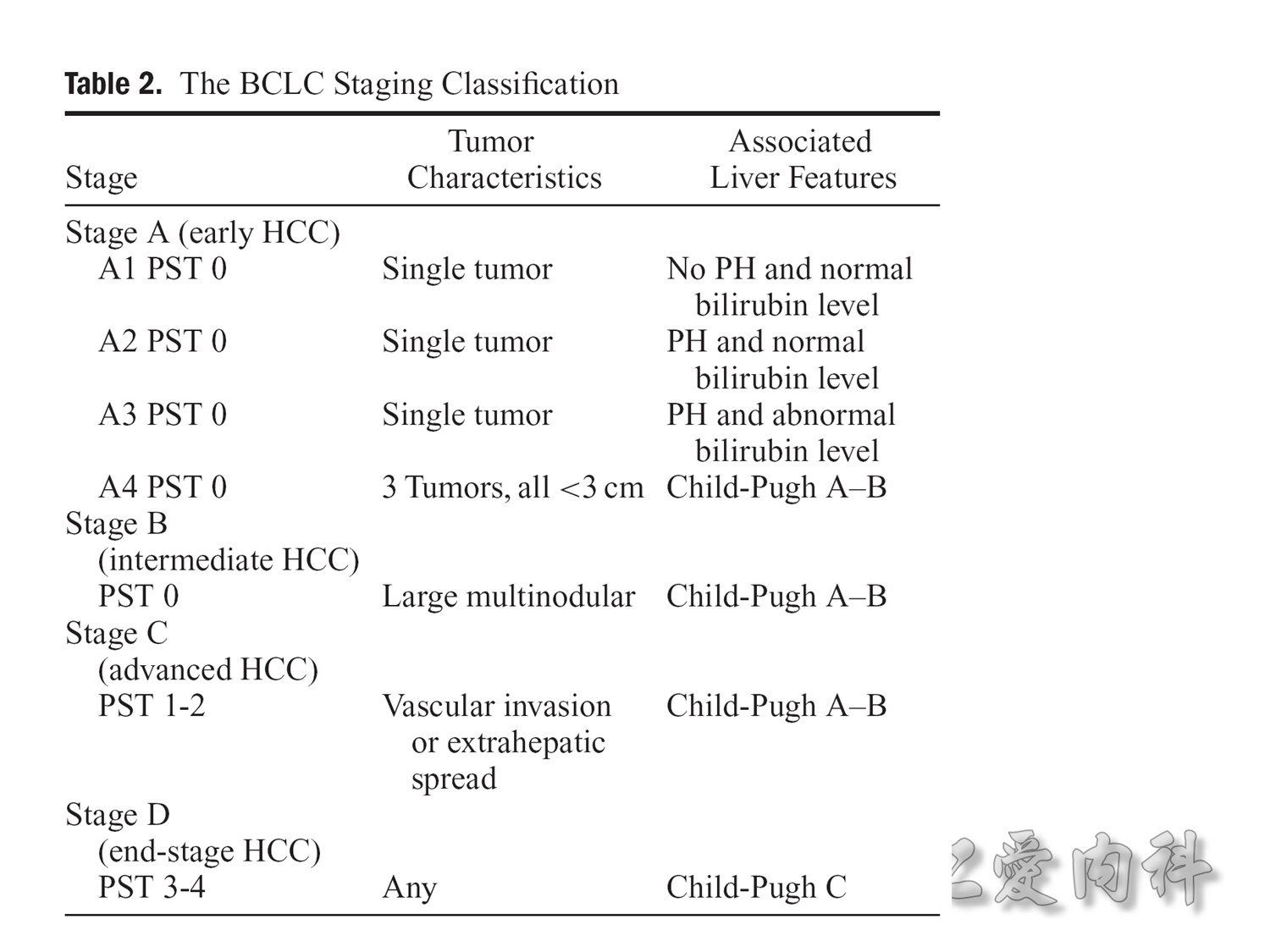

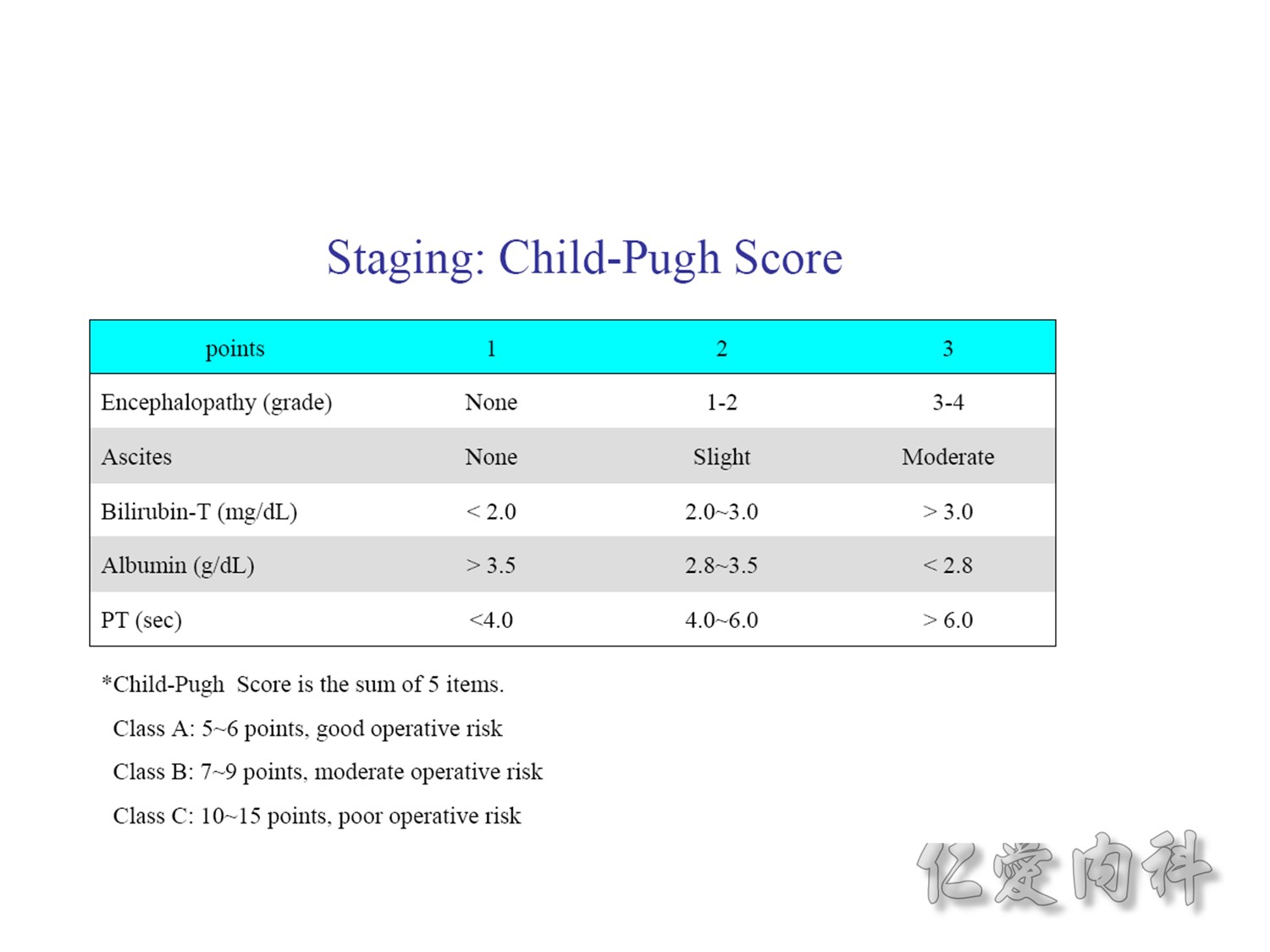
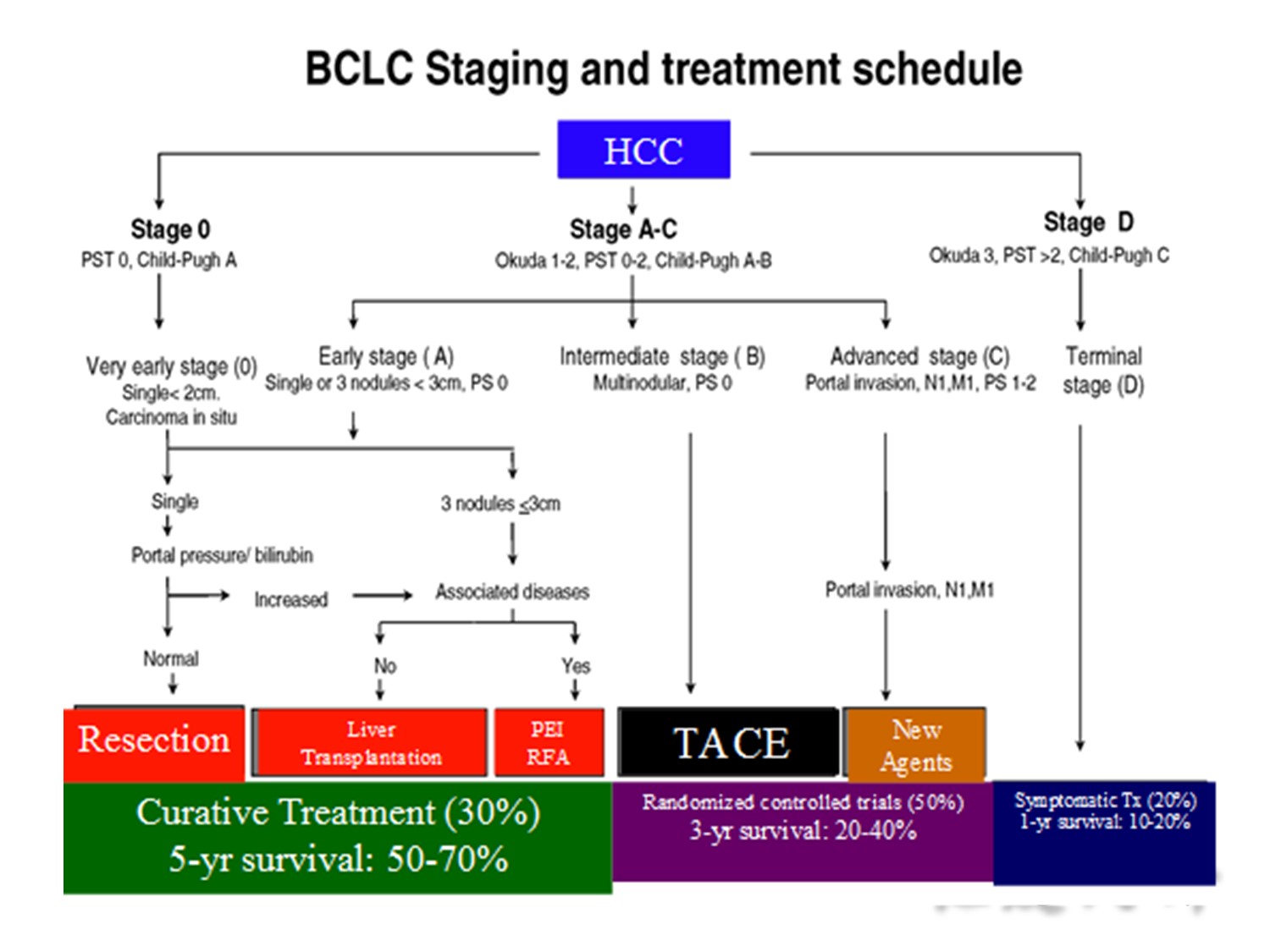
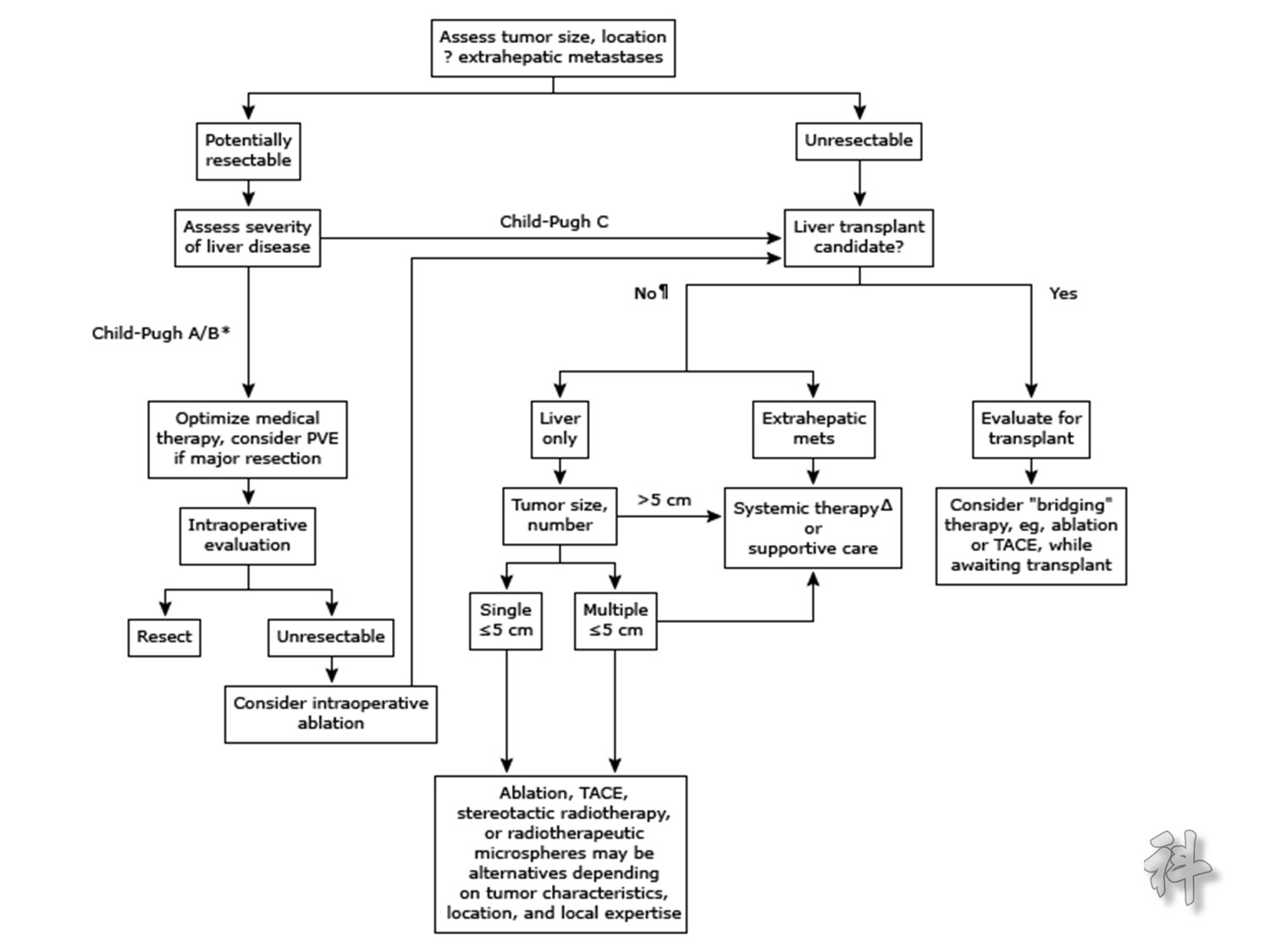
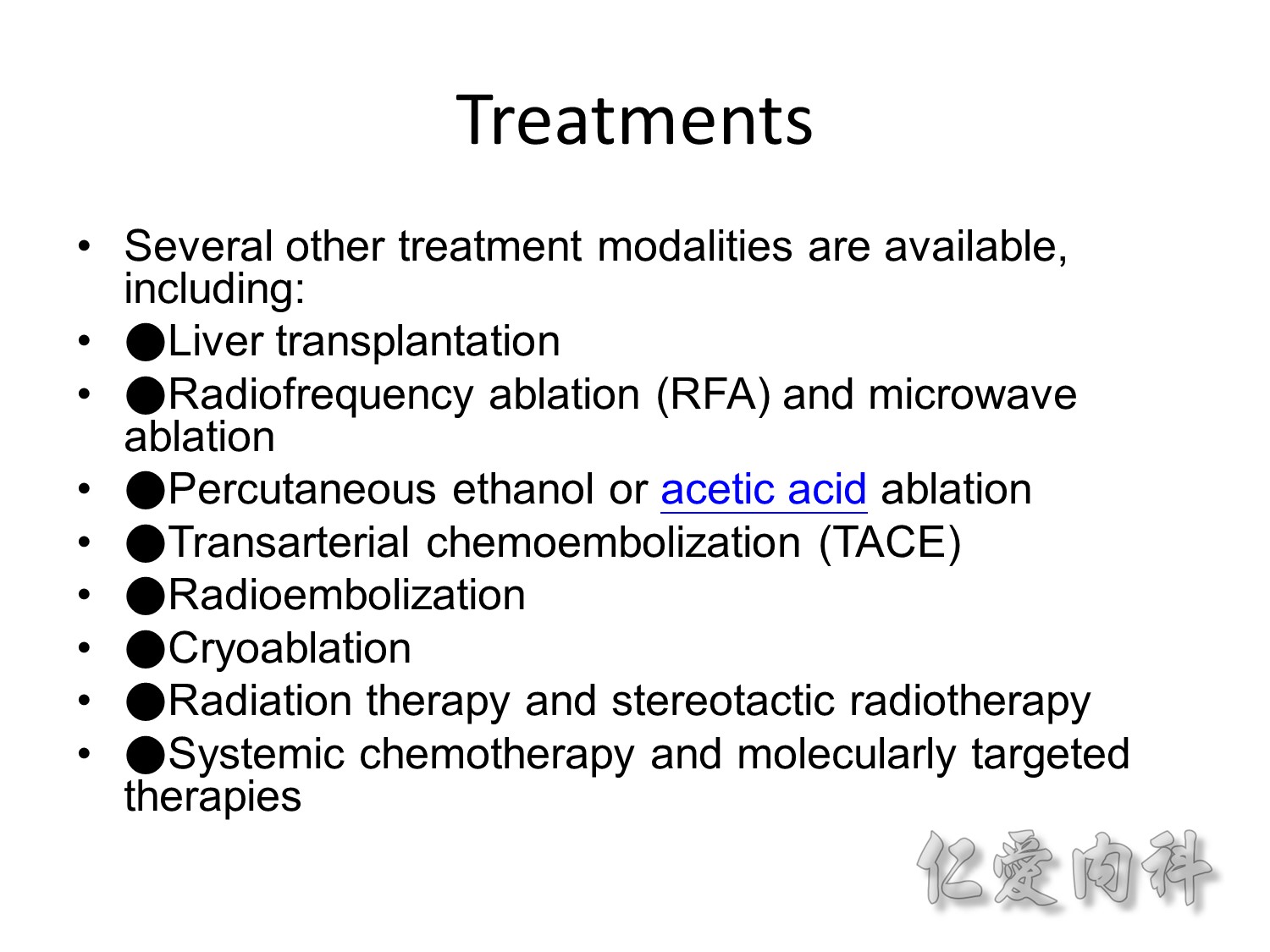
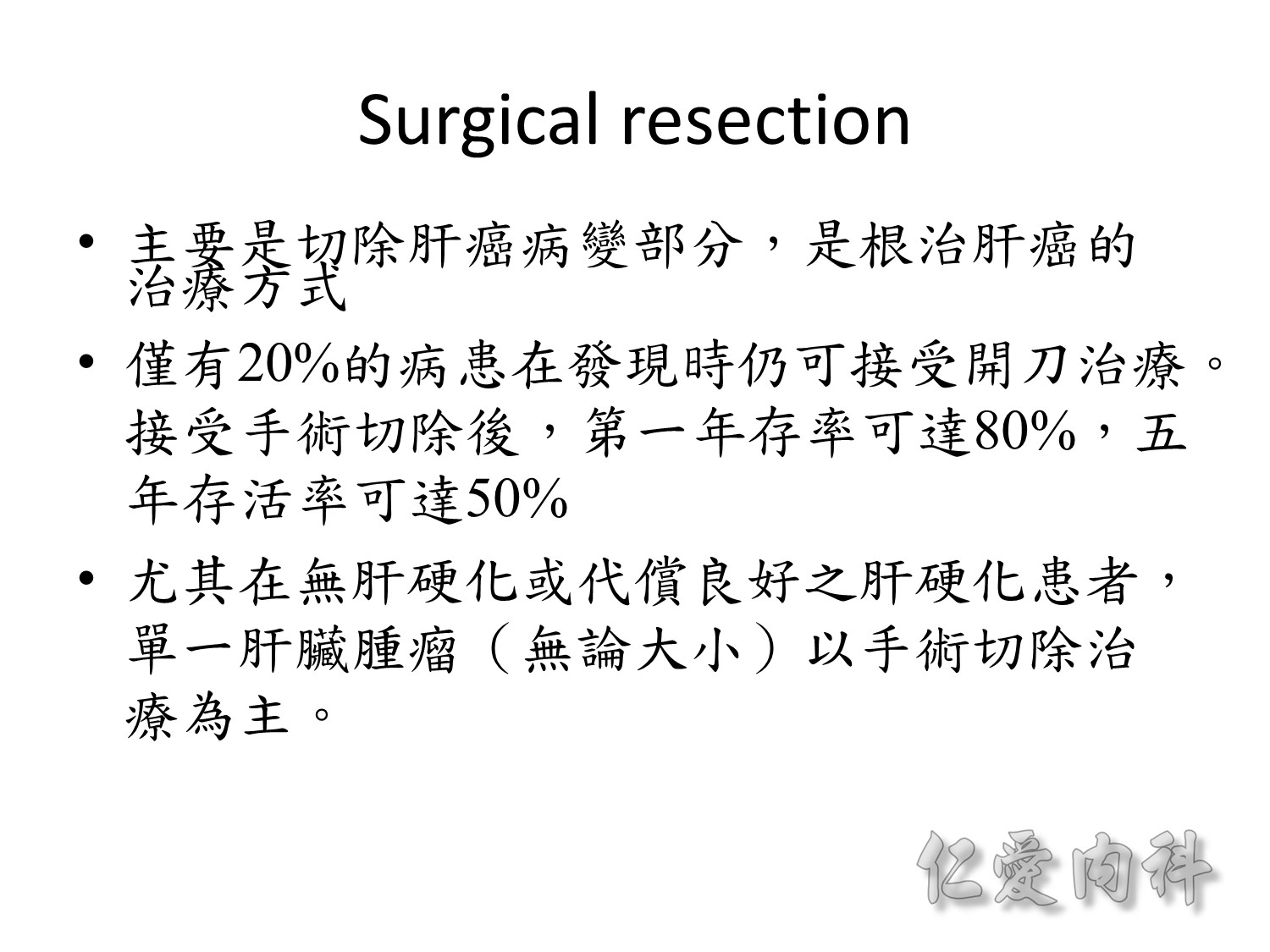
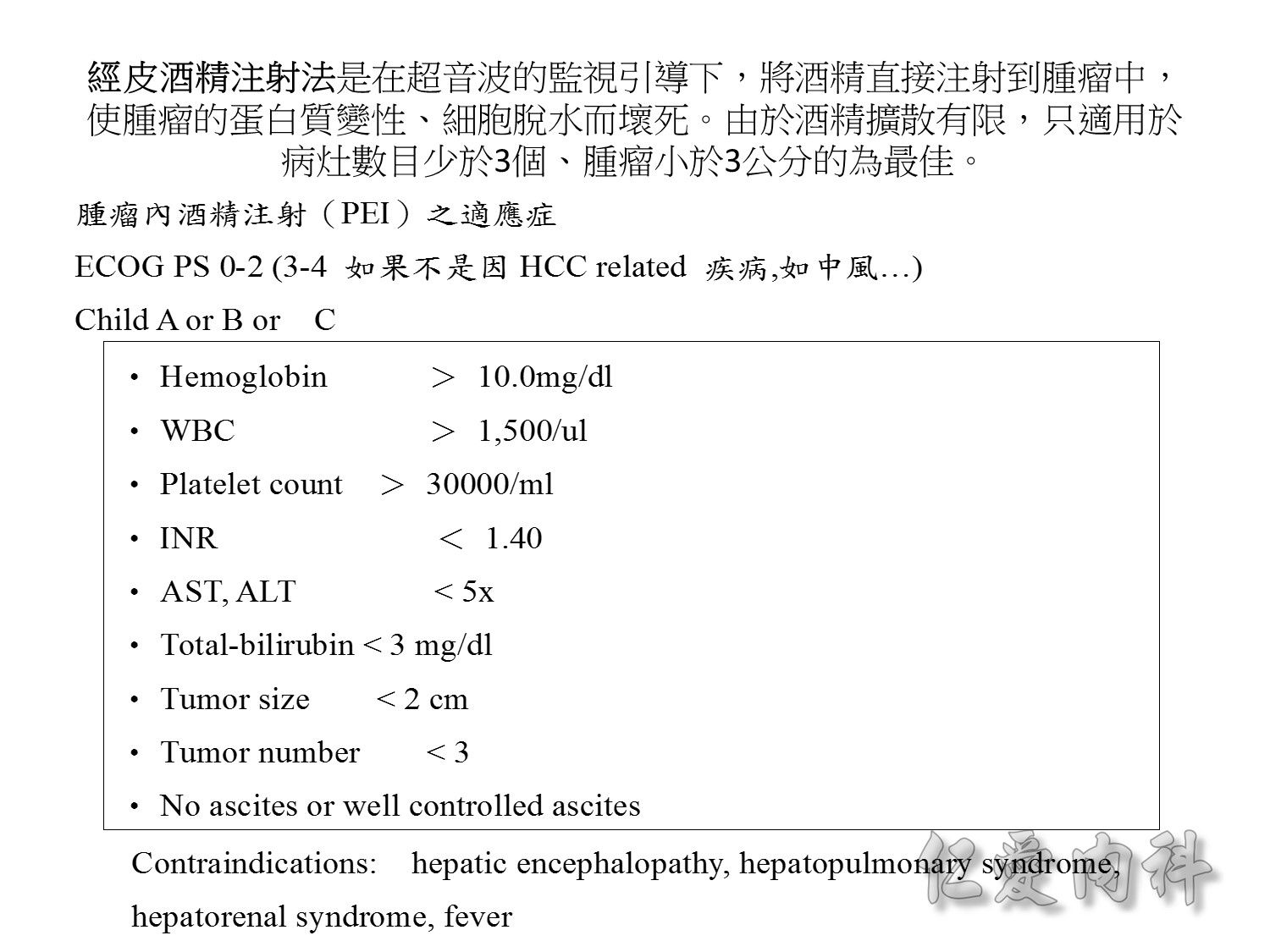
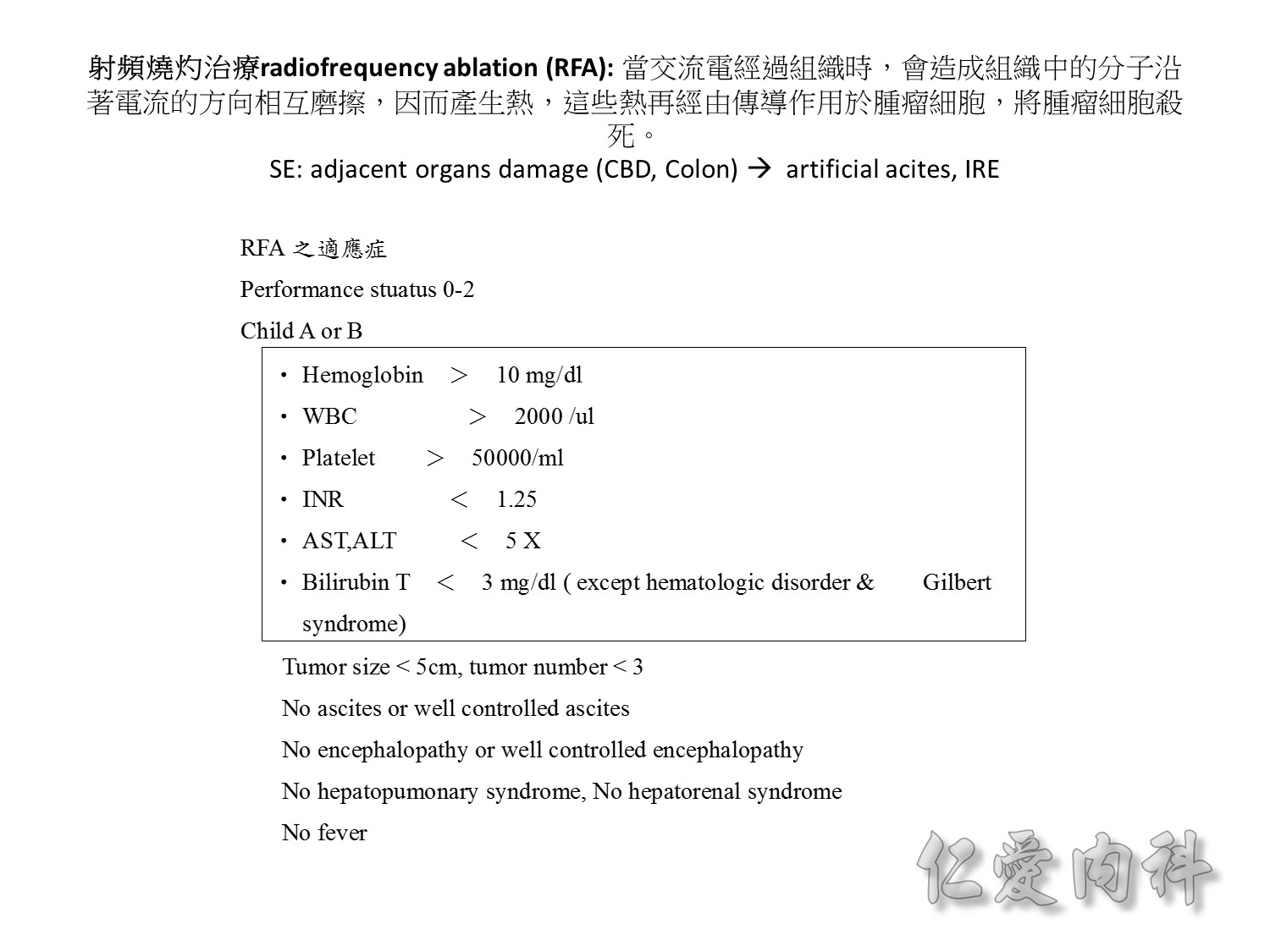
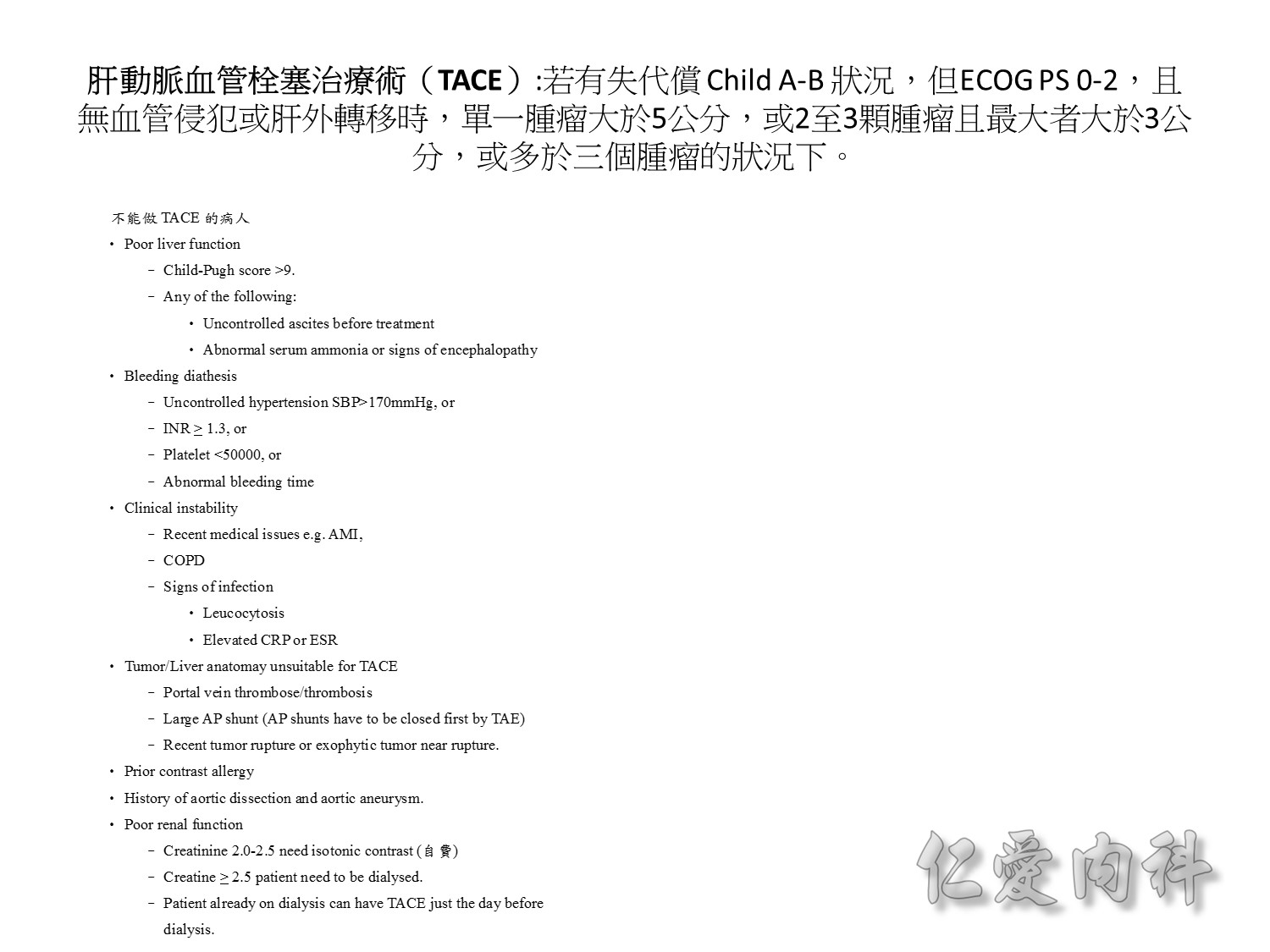
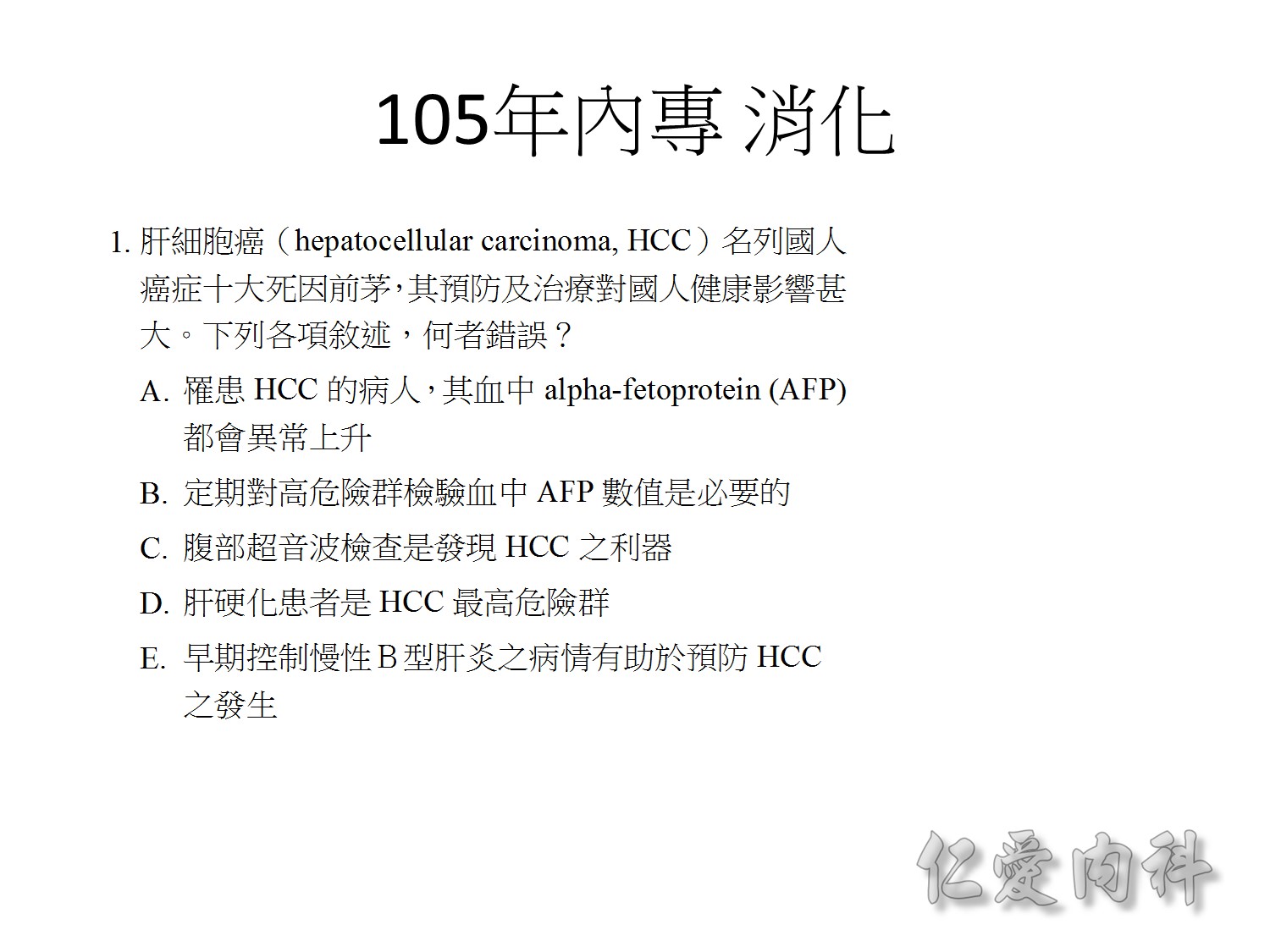
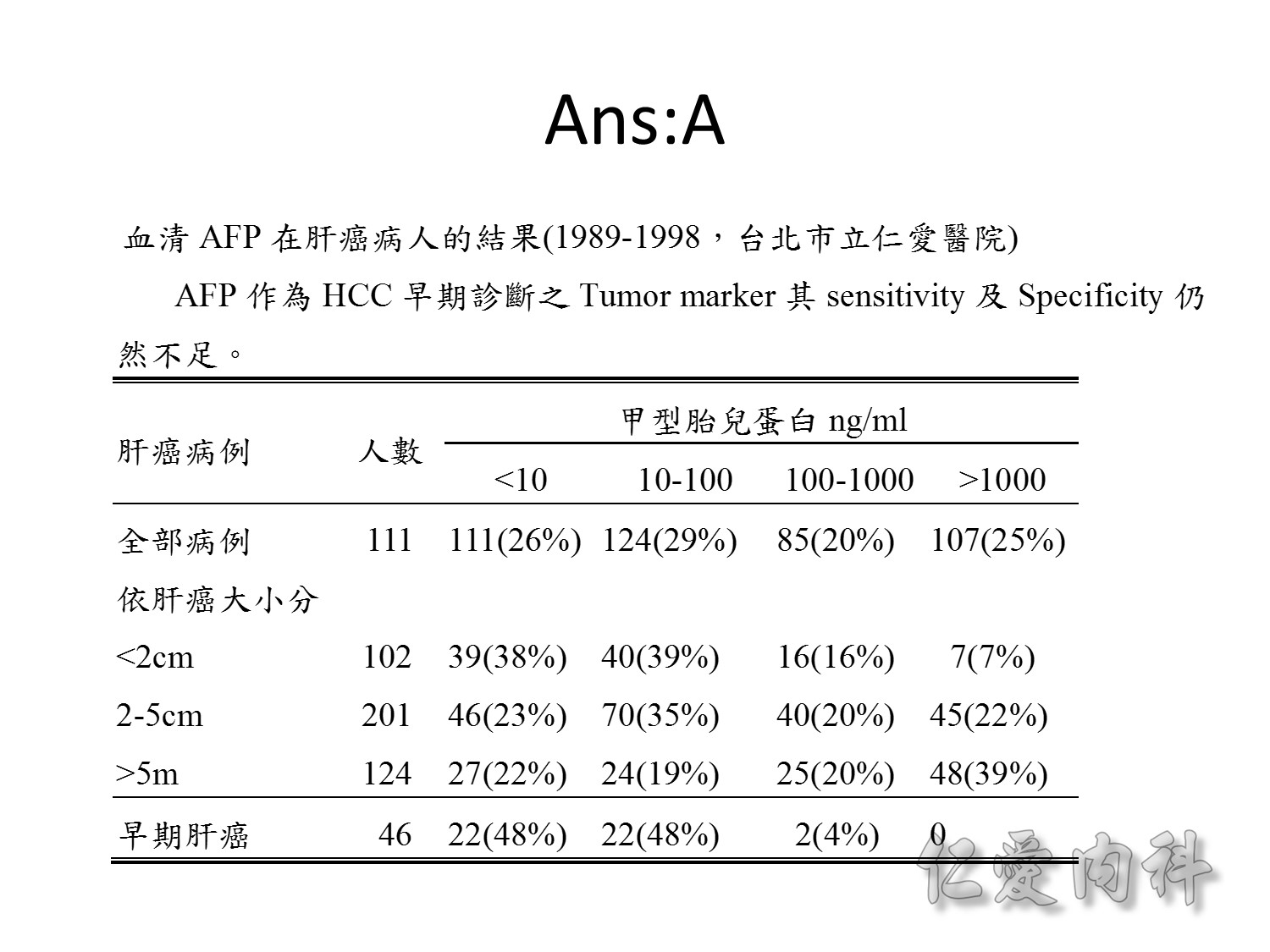
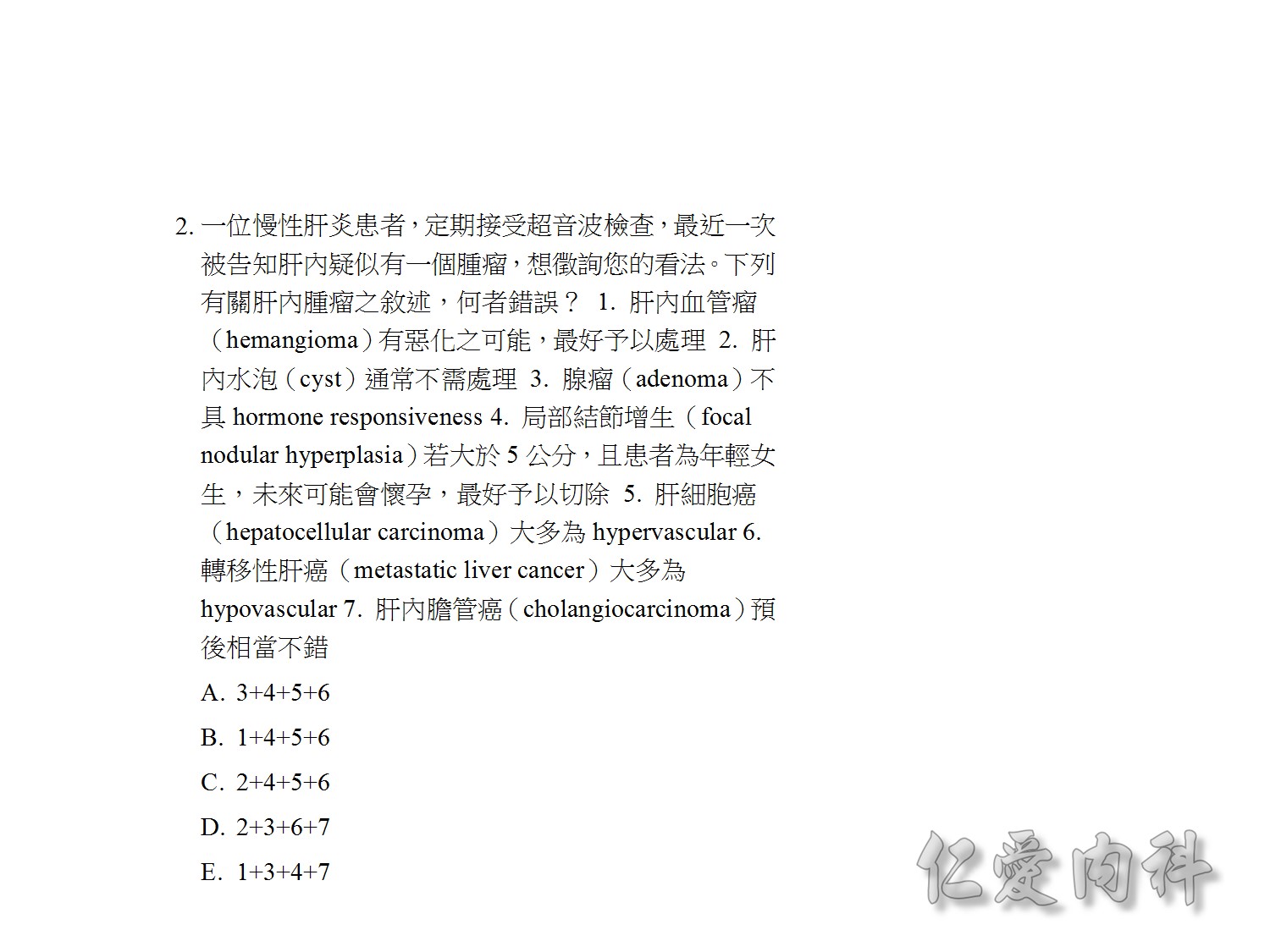 ANSWER: E
ANSWER: E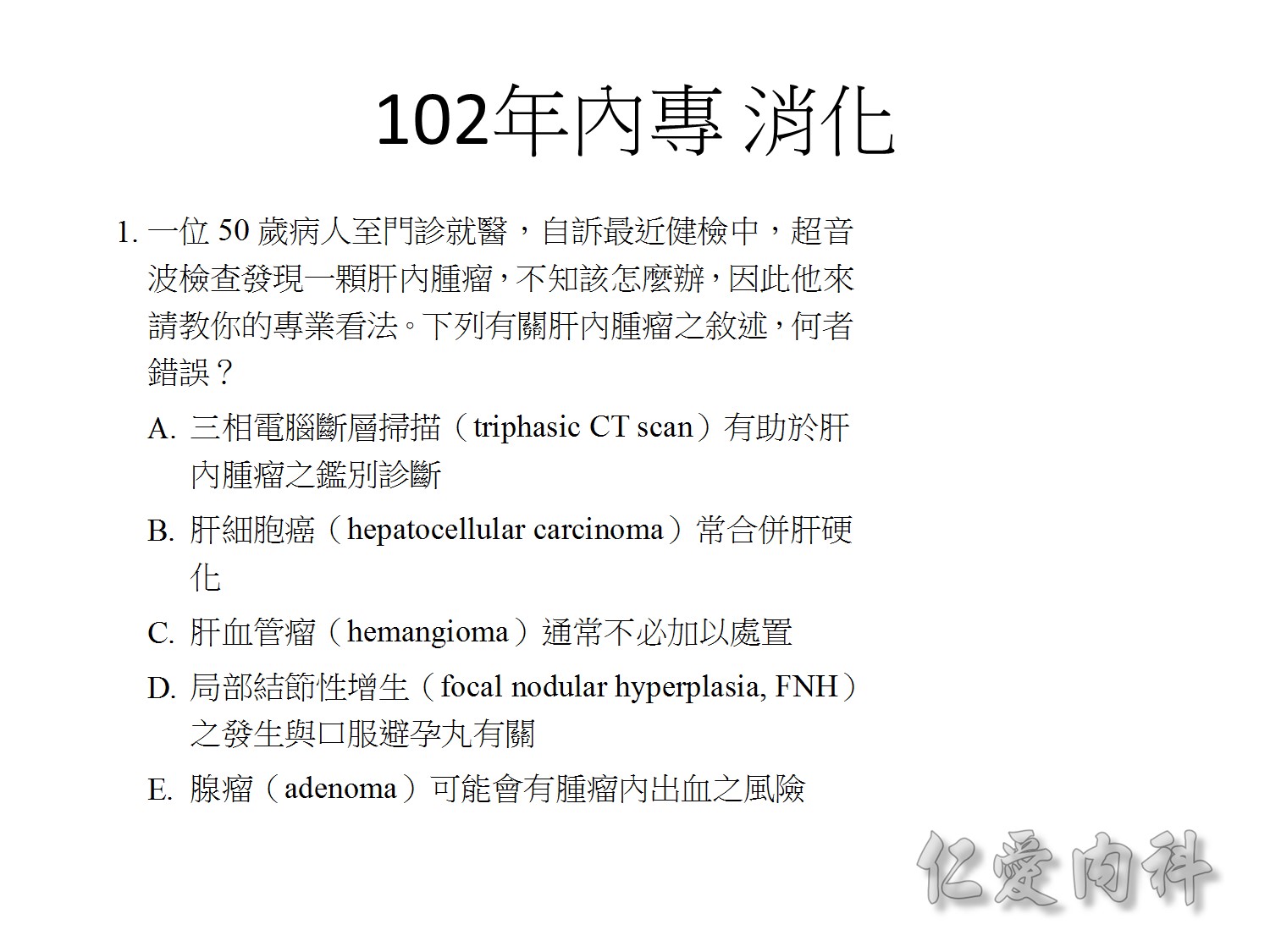
ANSWER: D
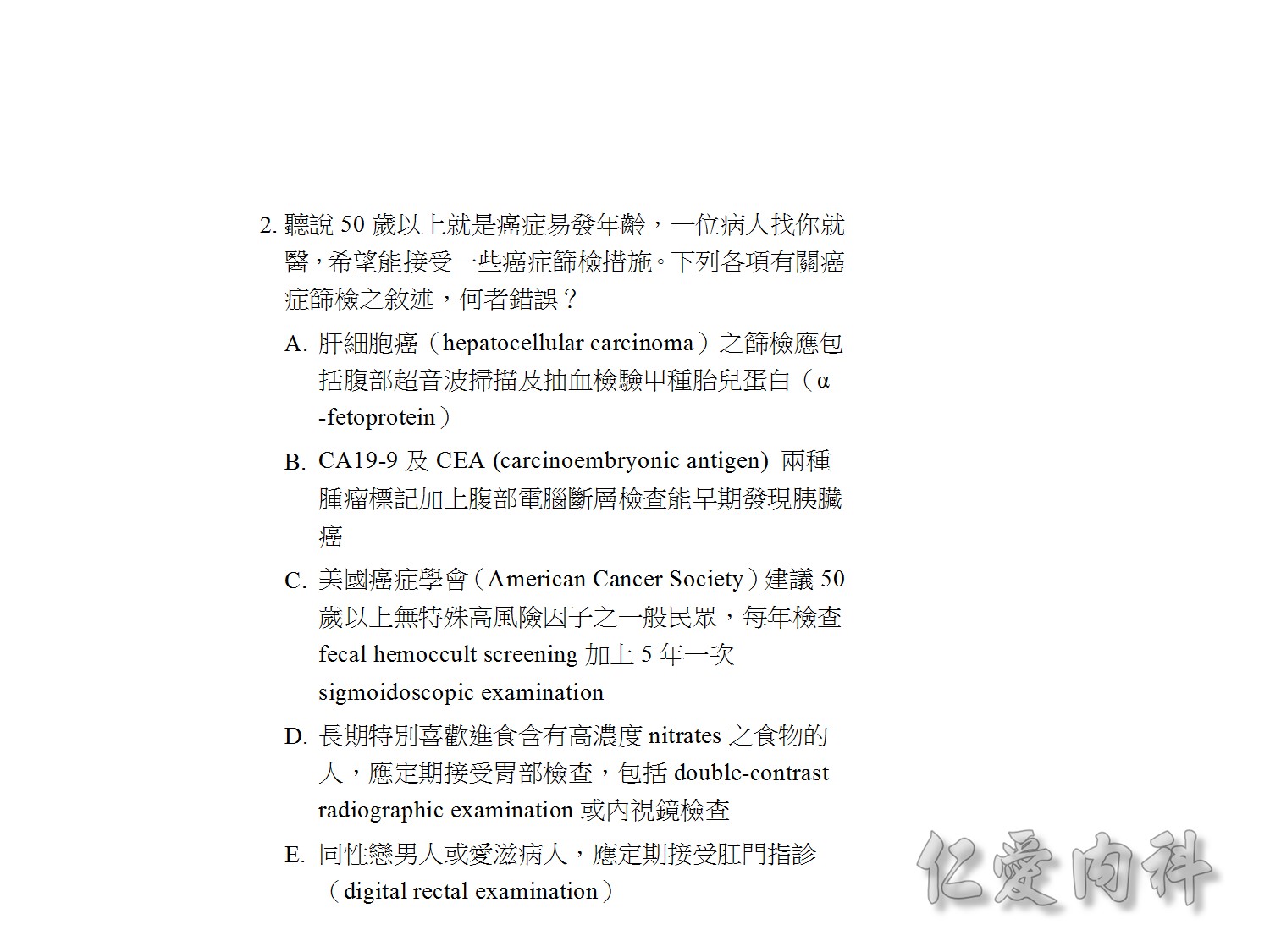
ANSWER: C?
